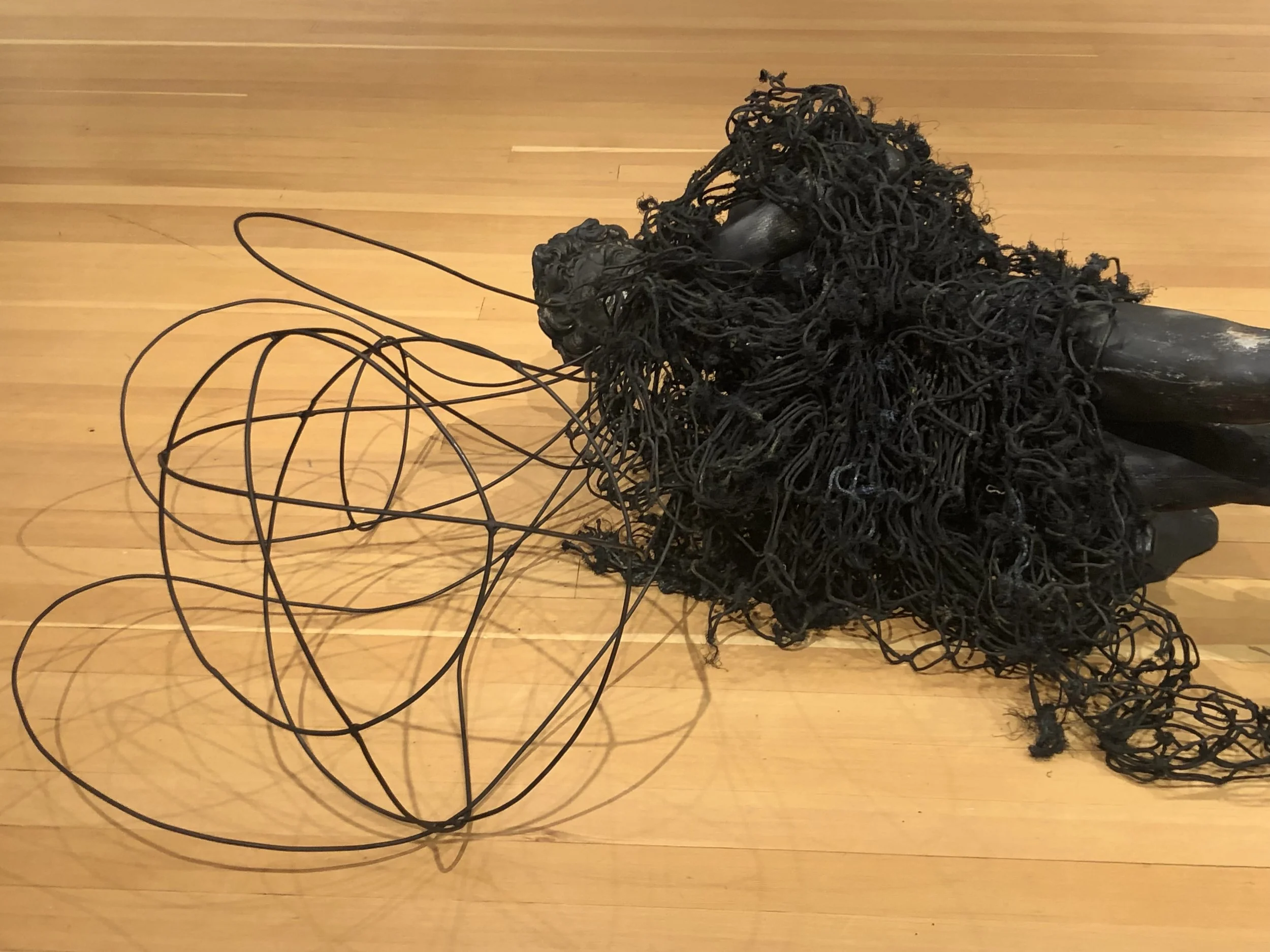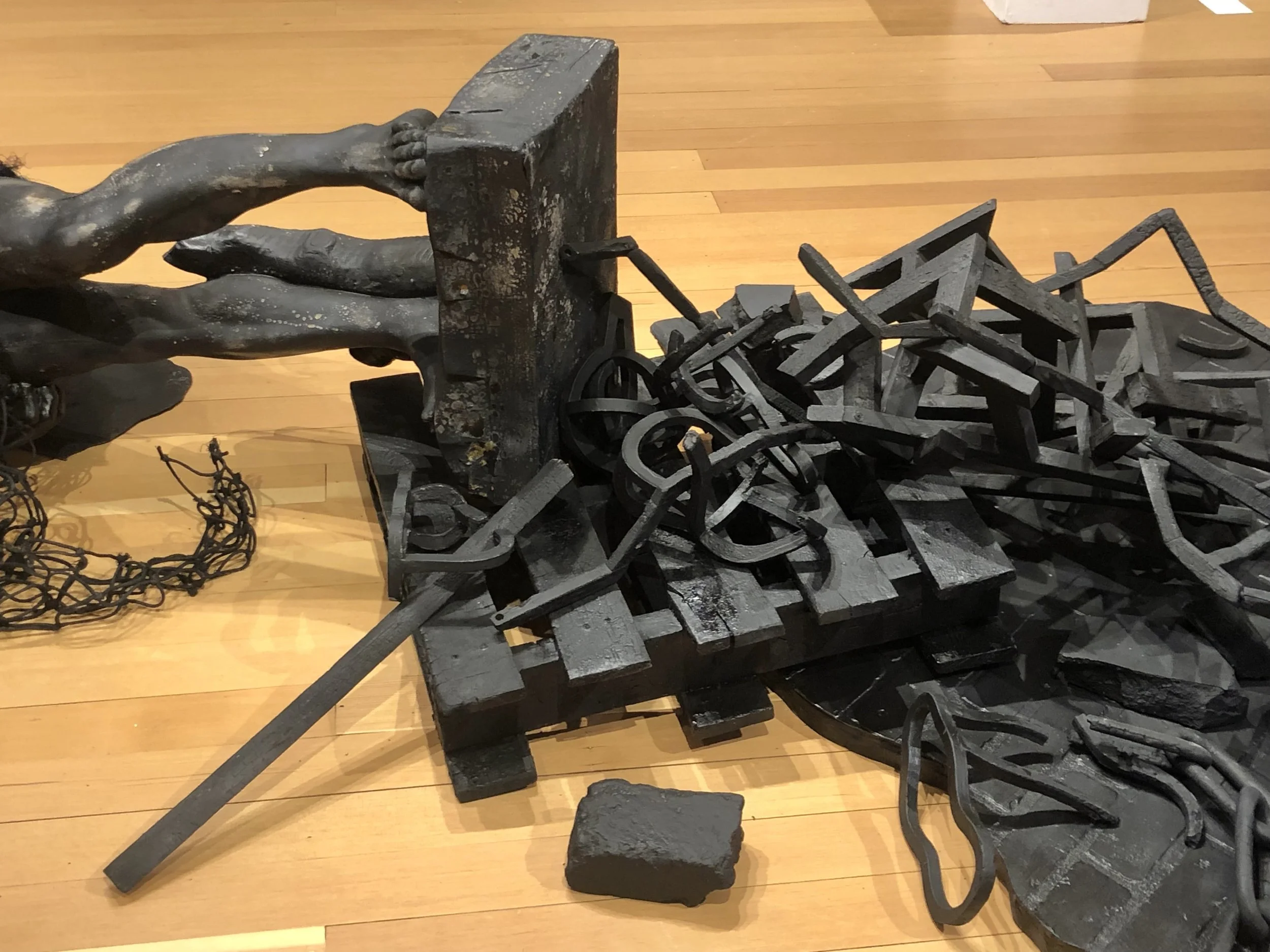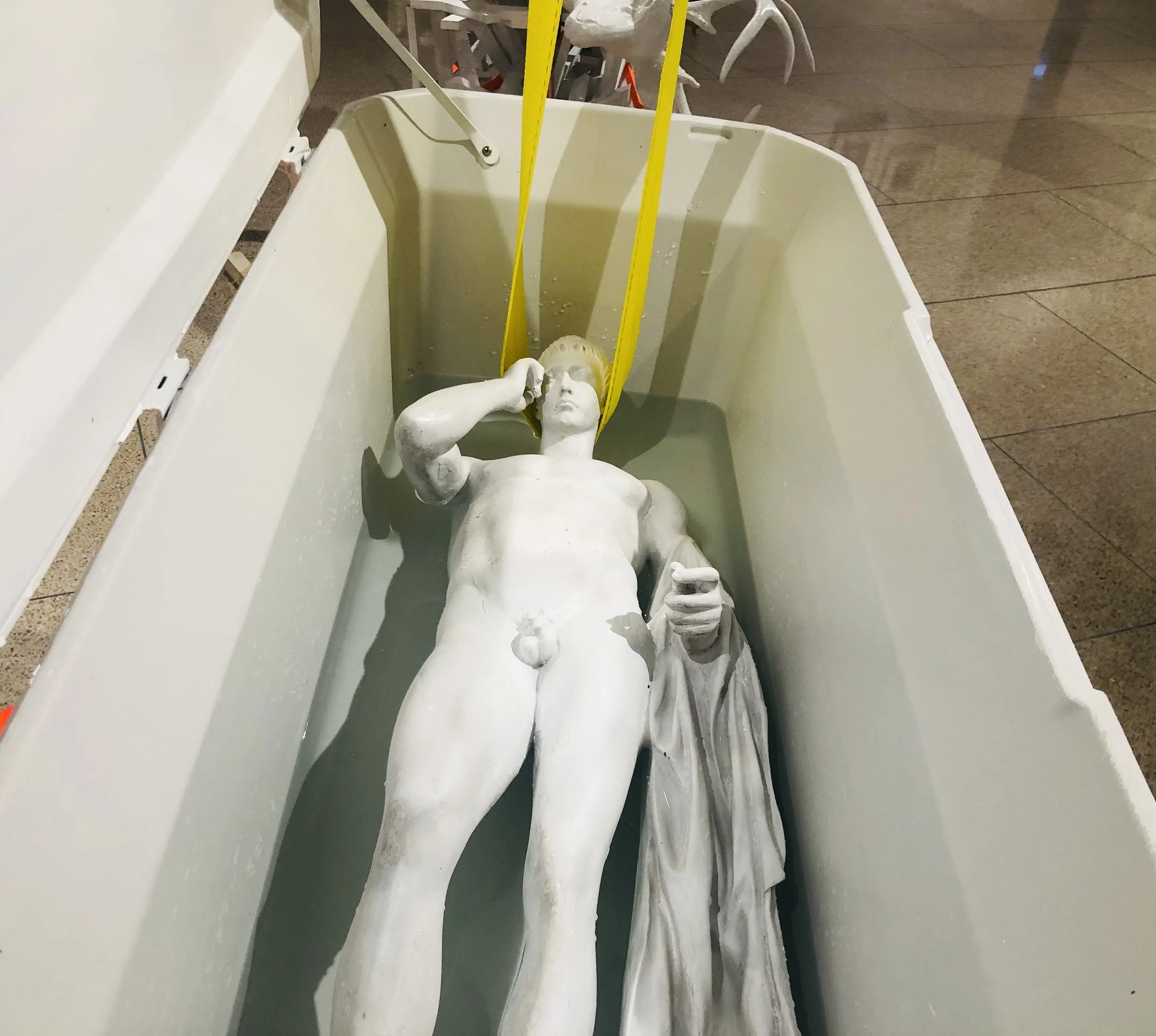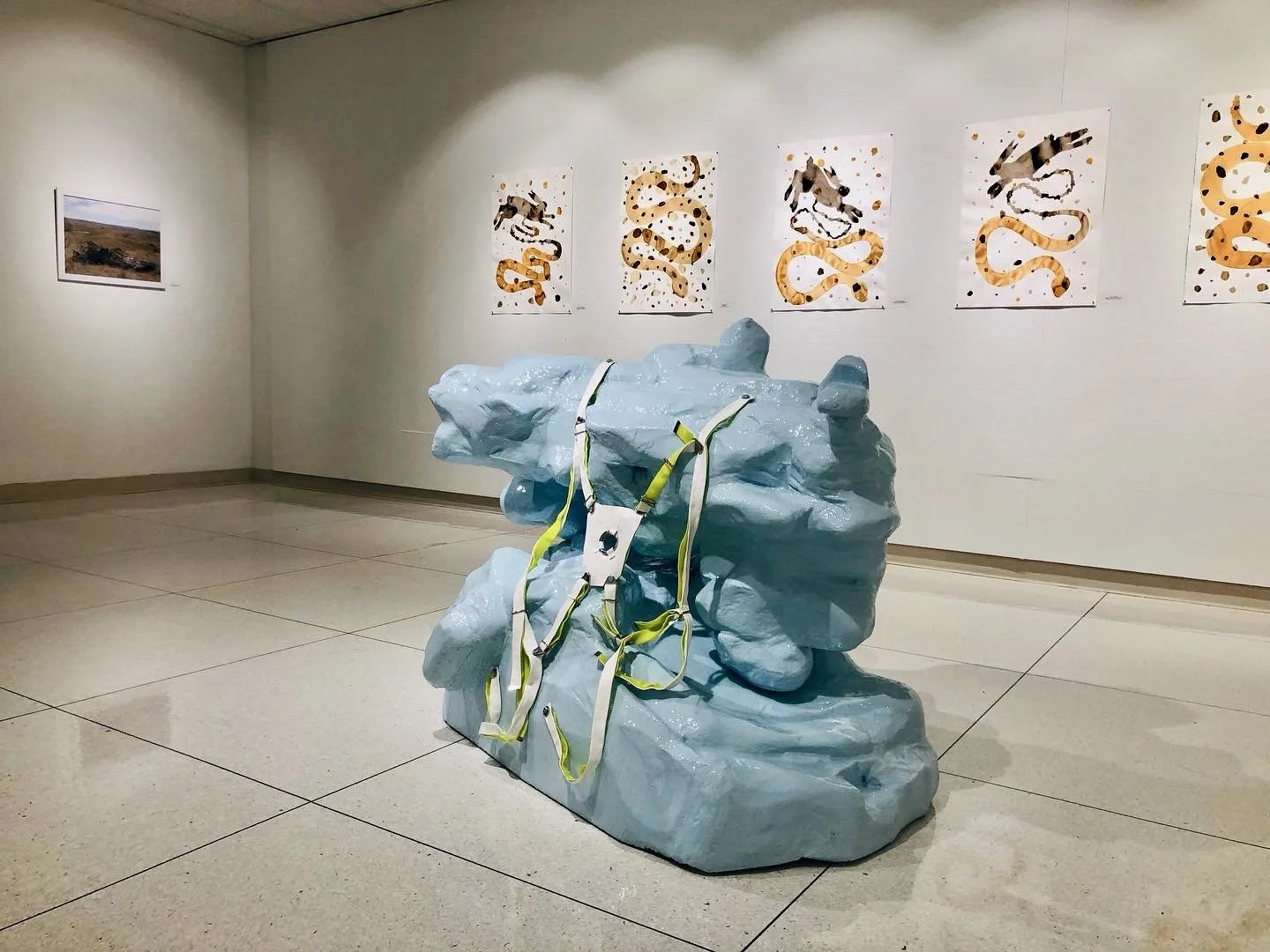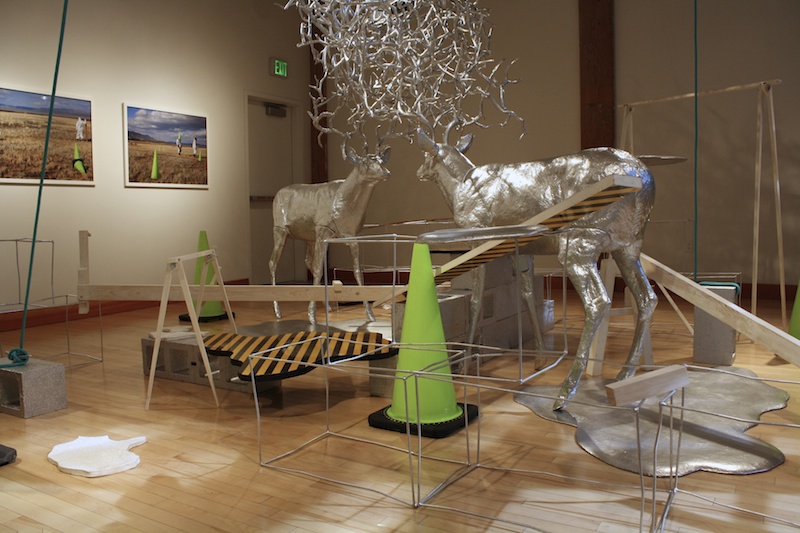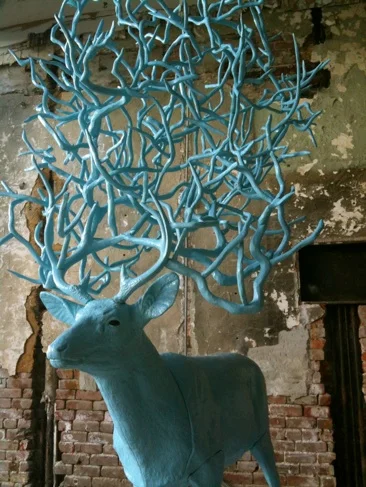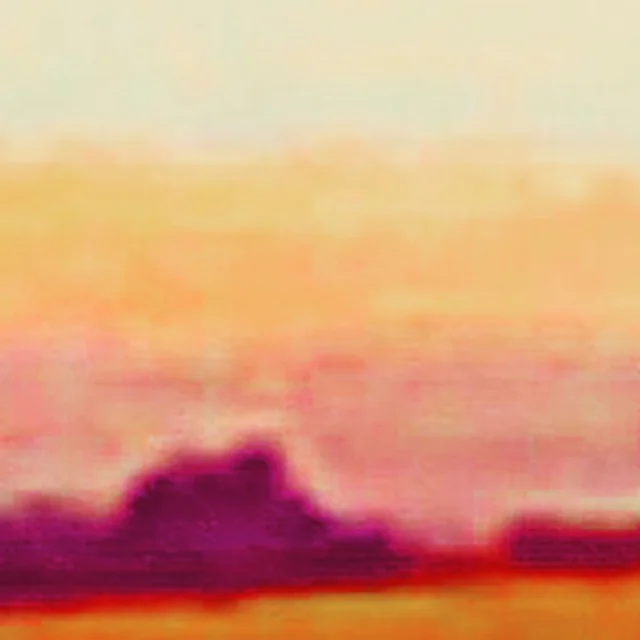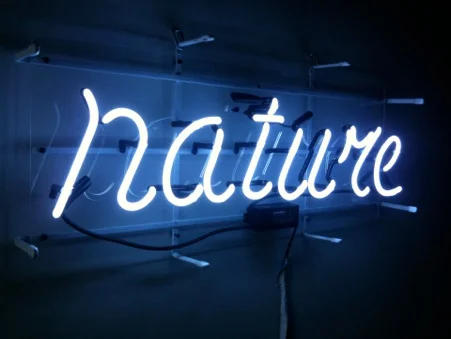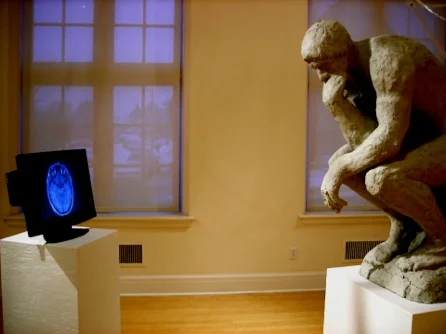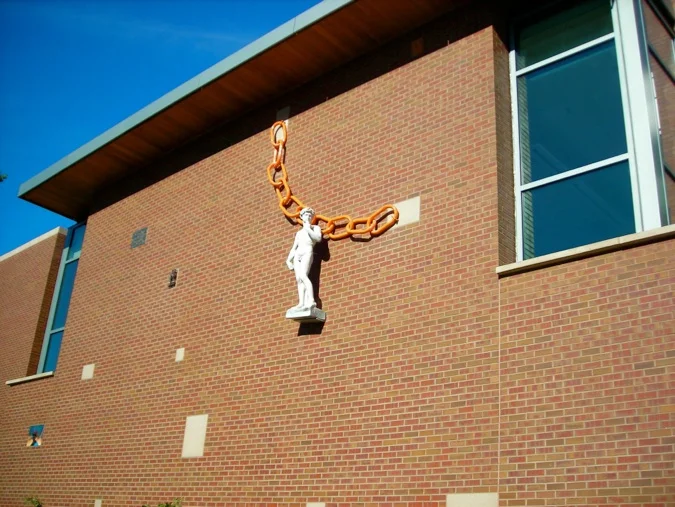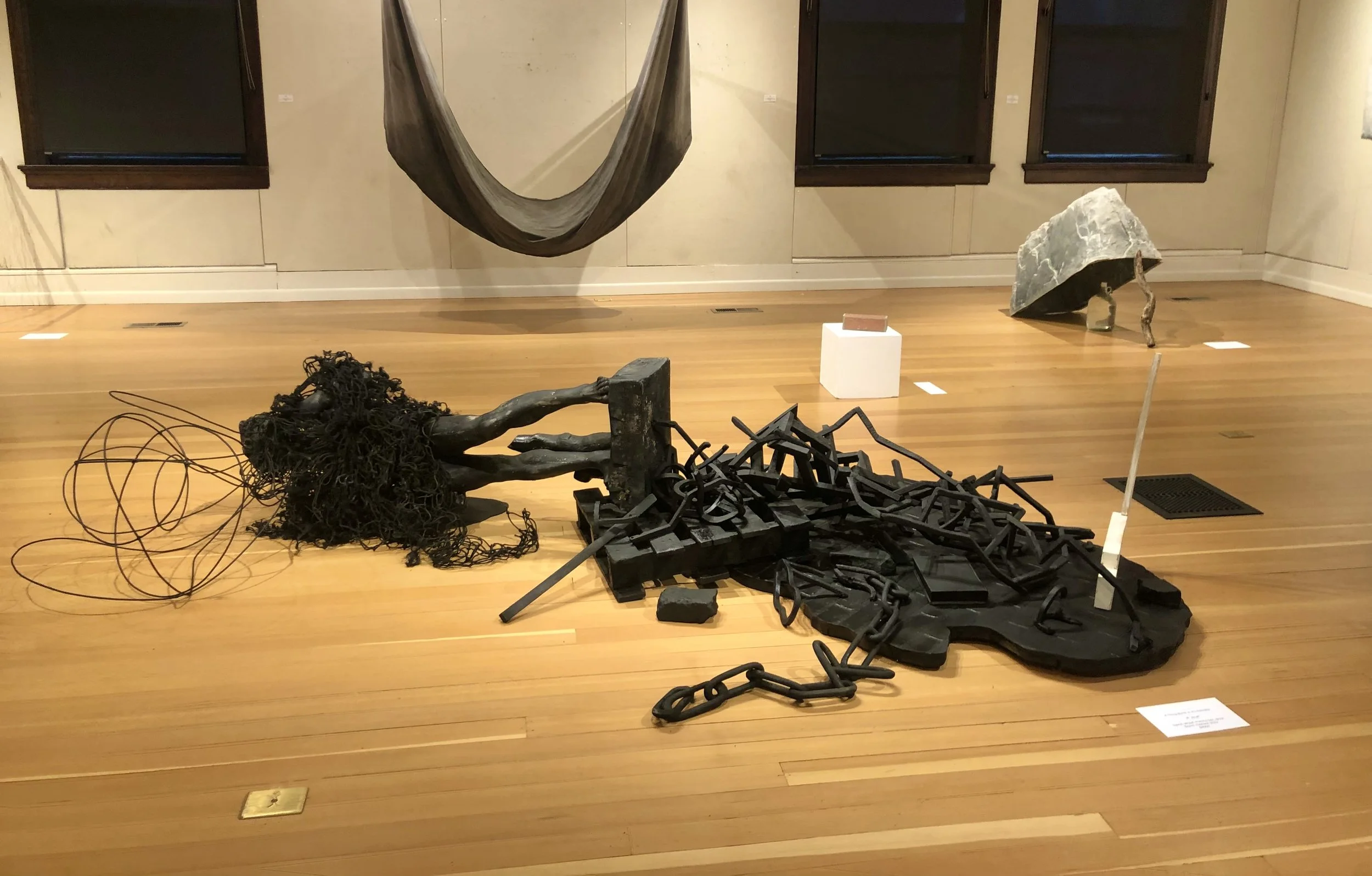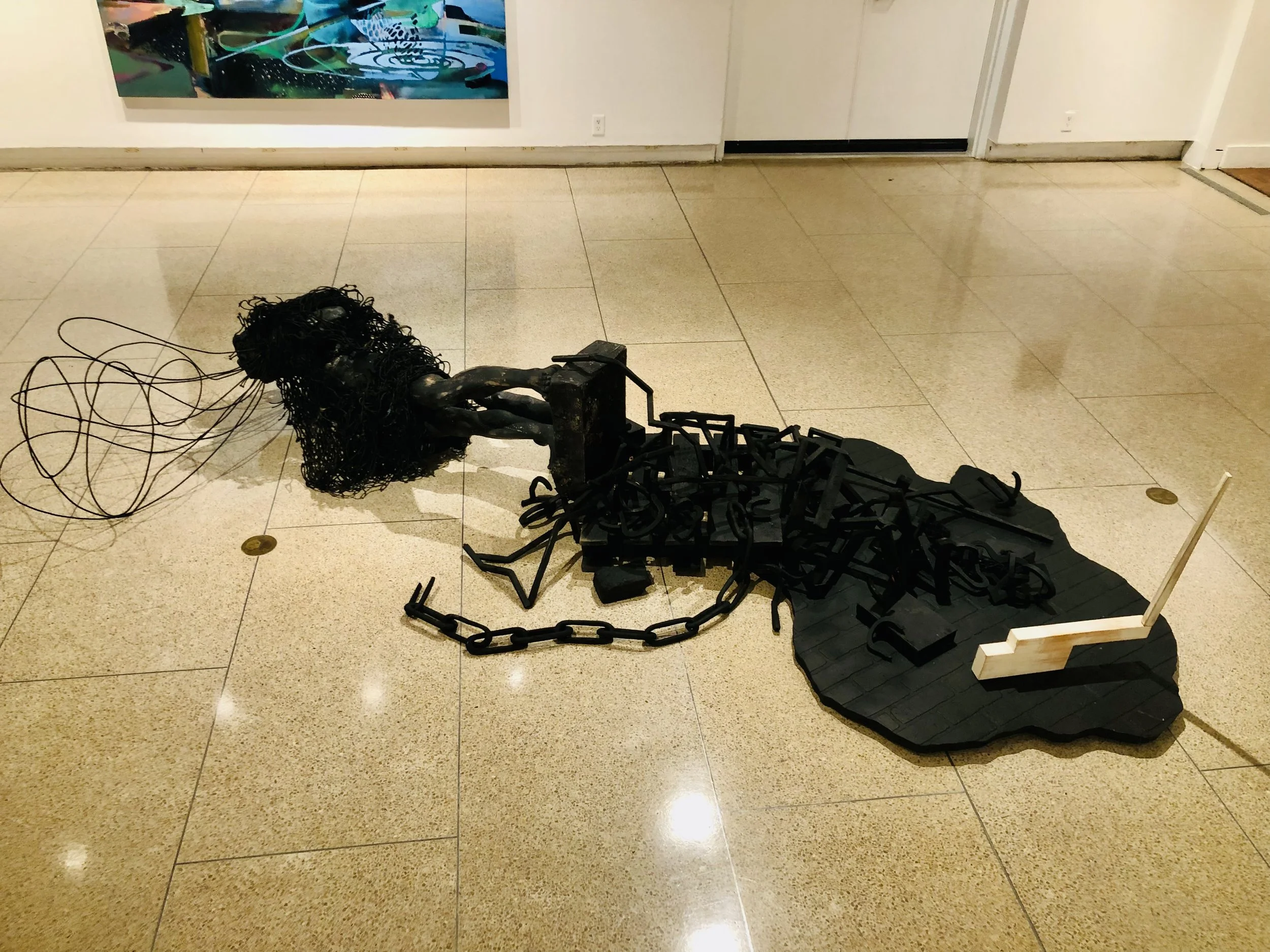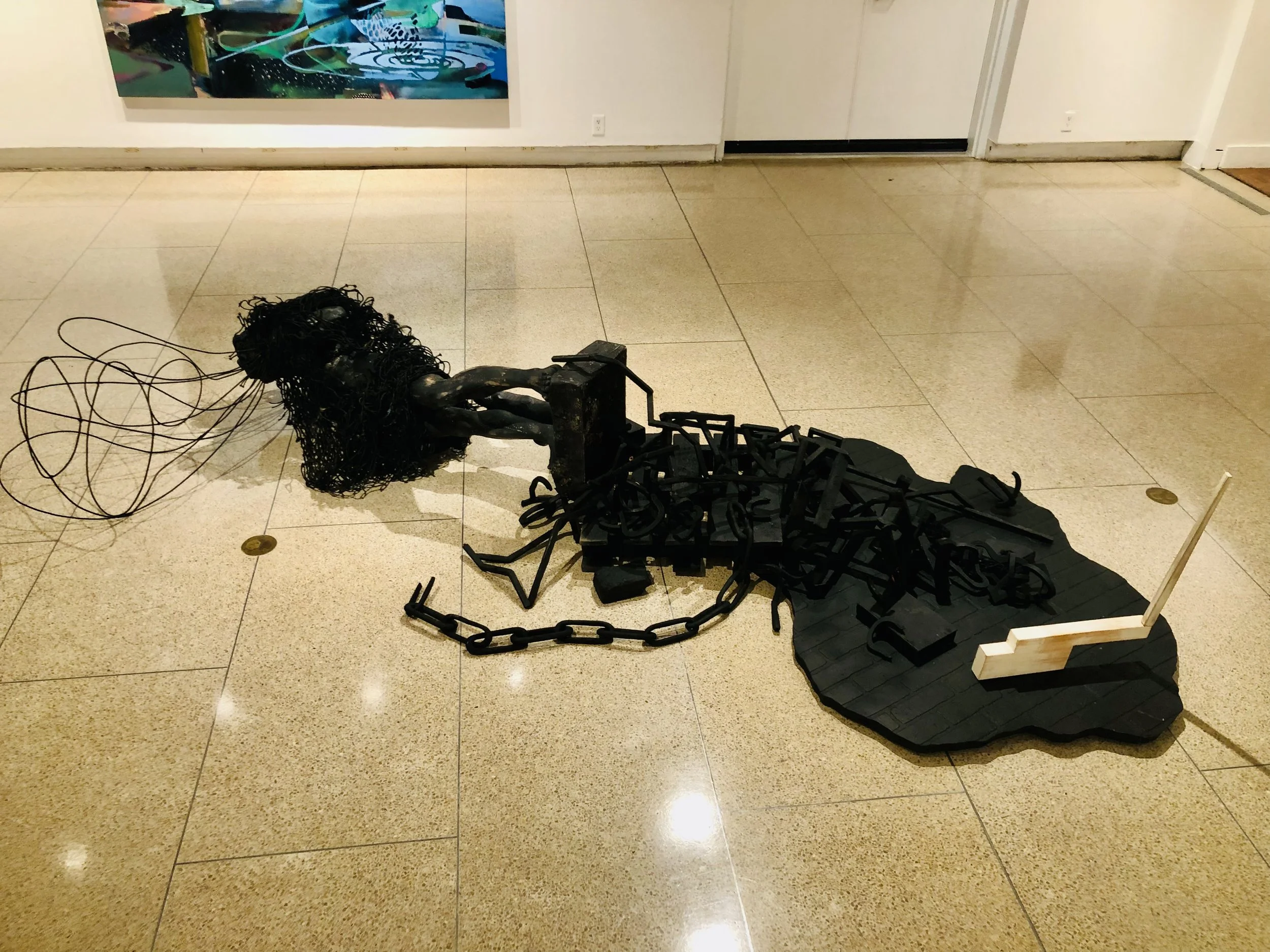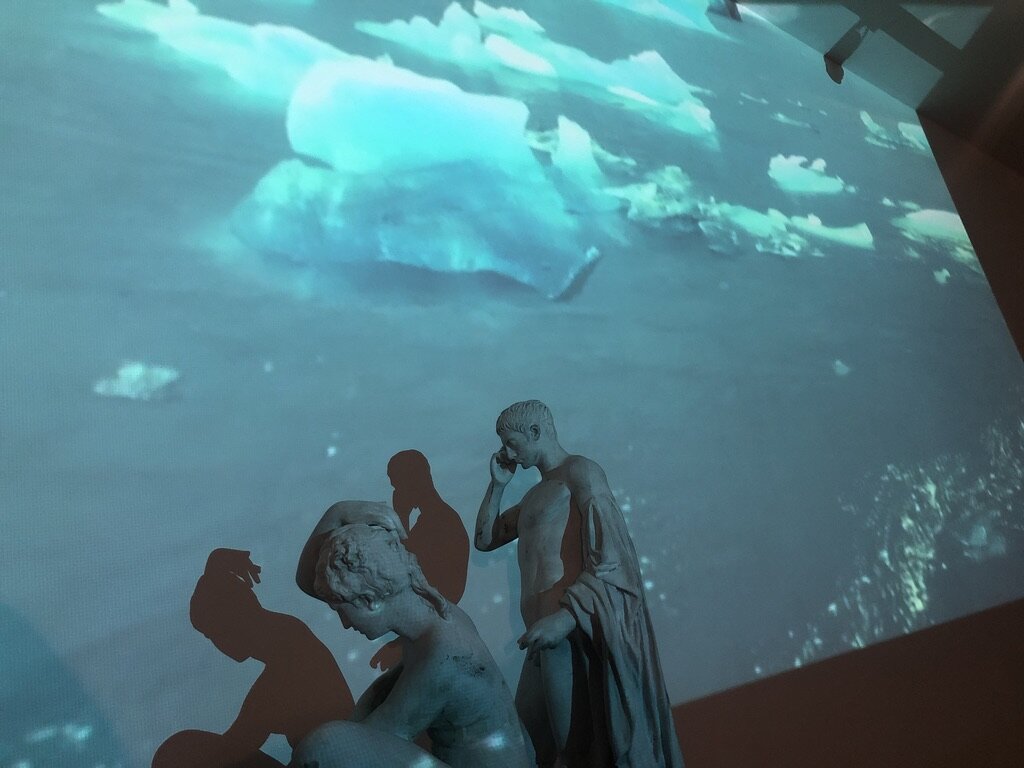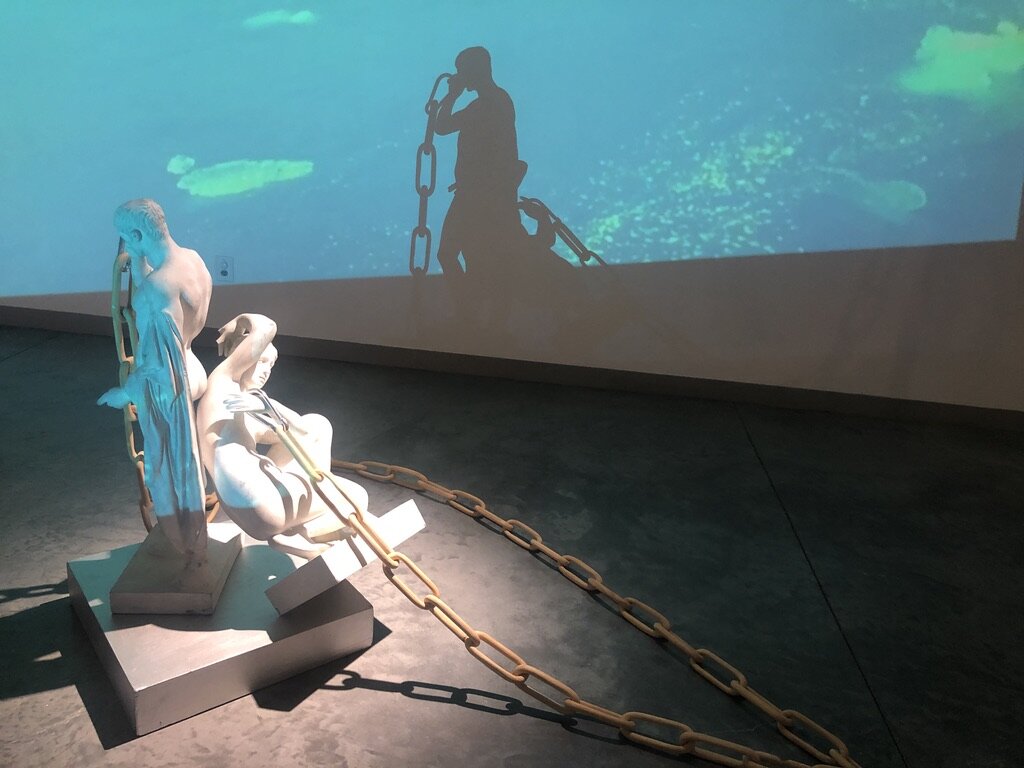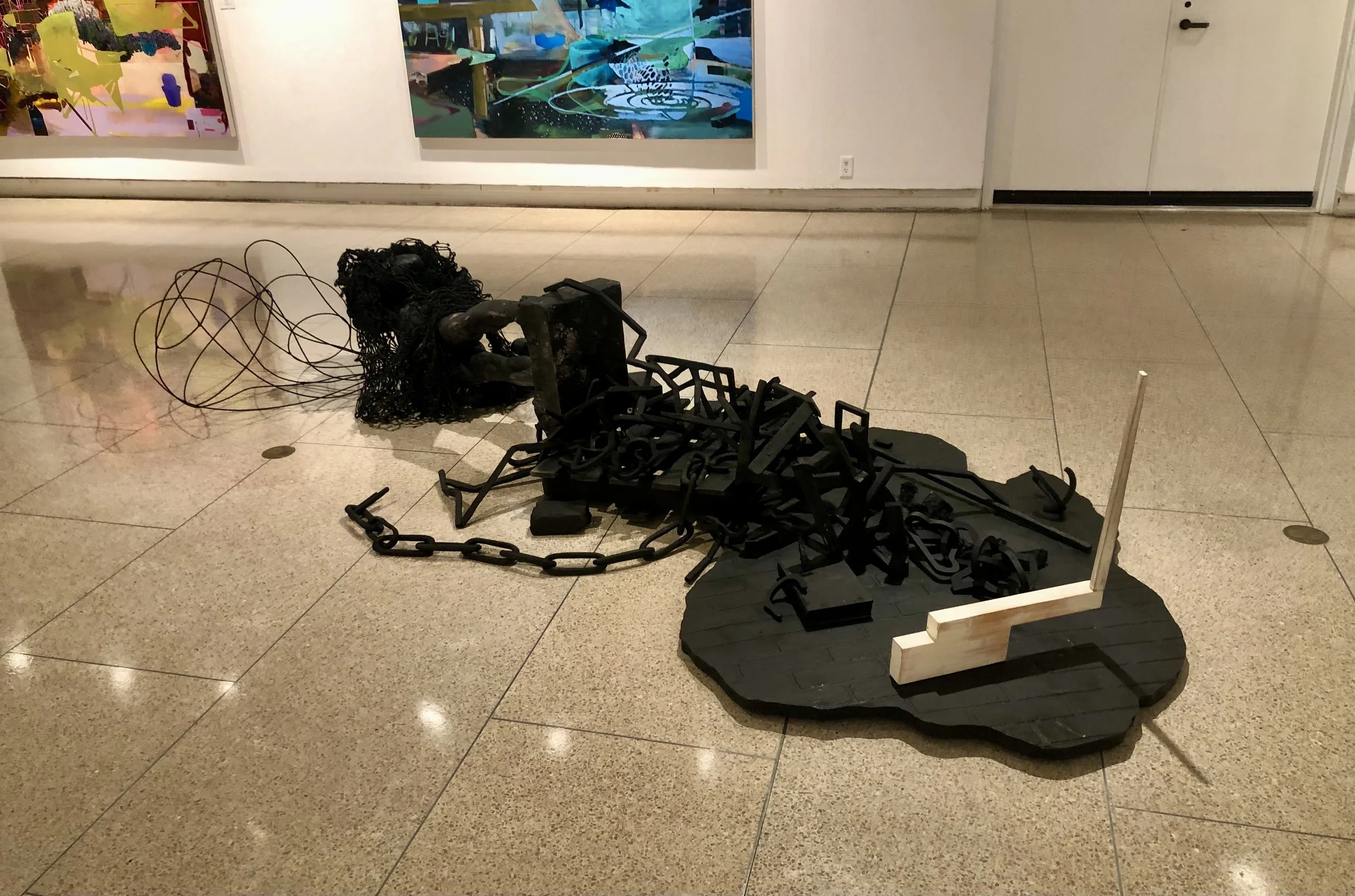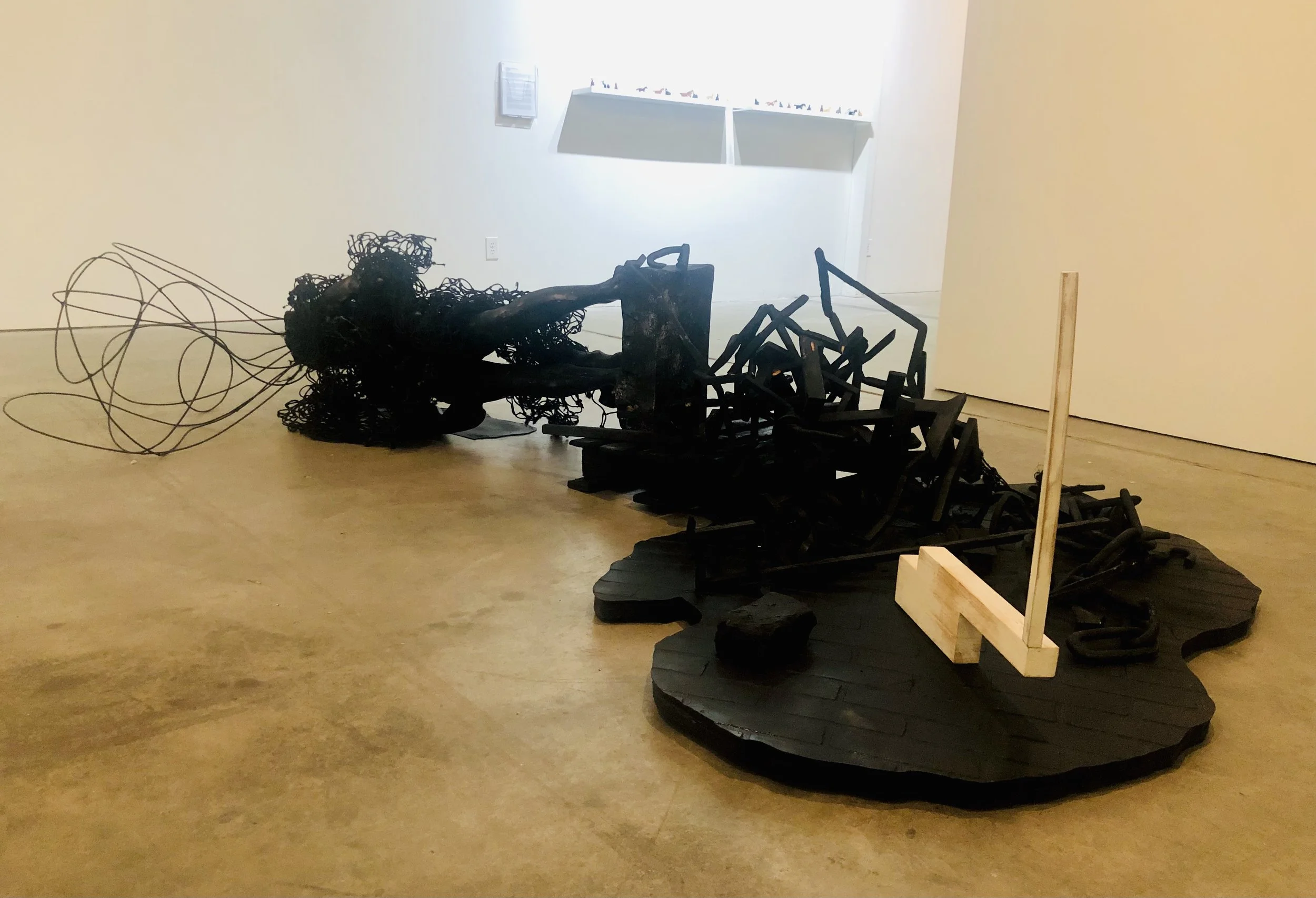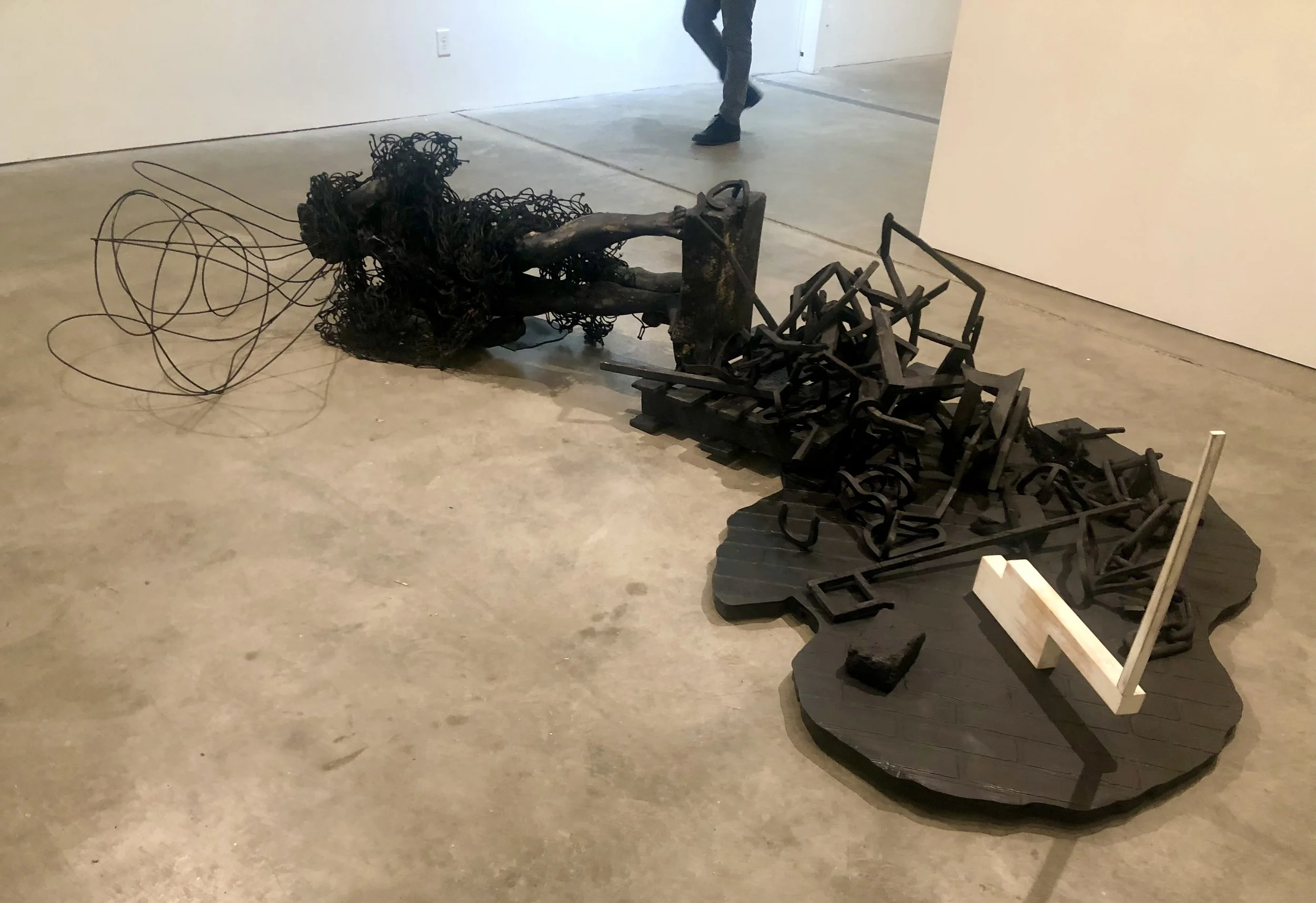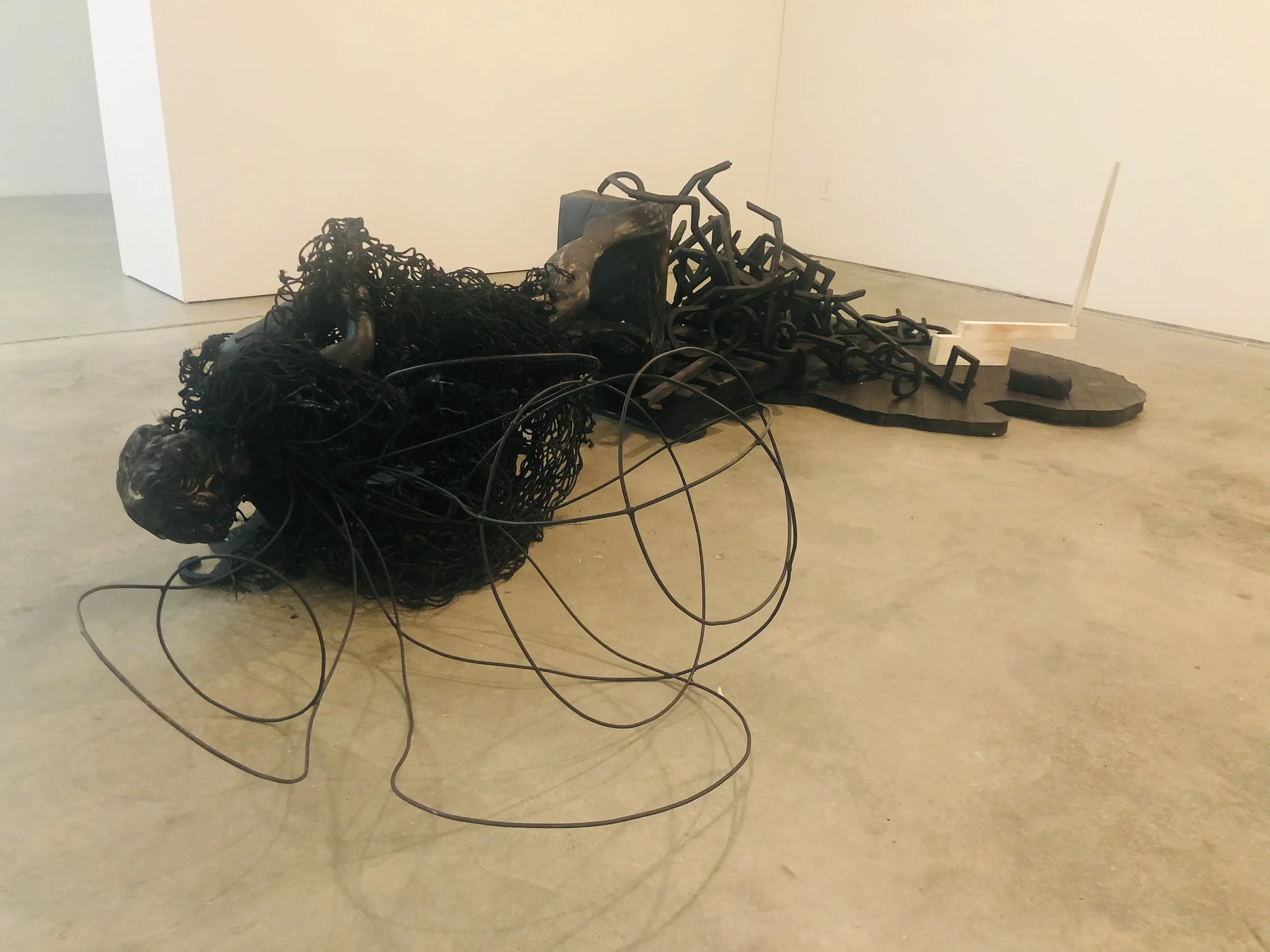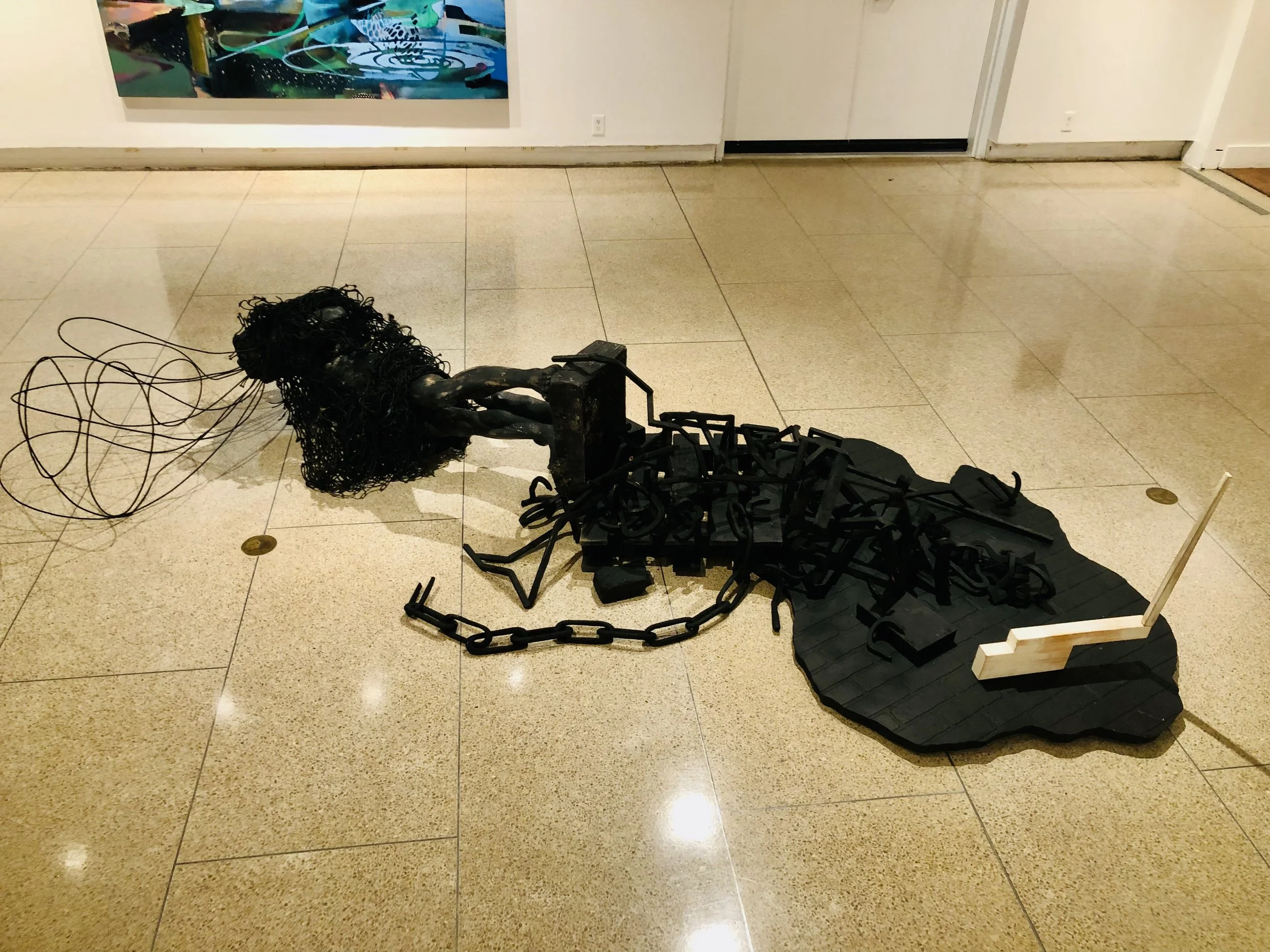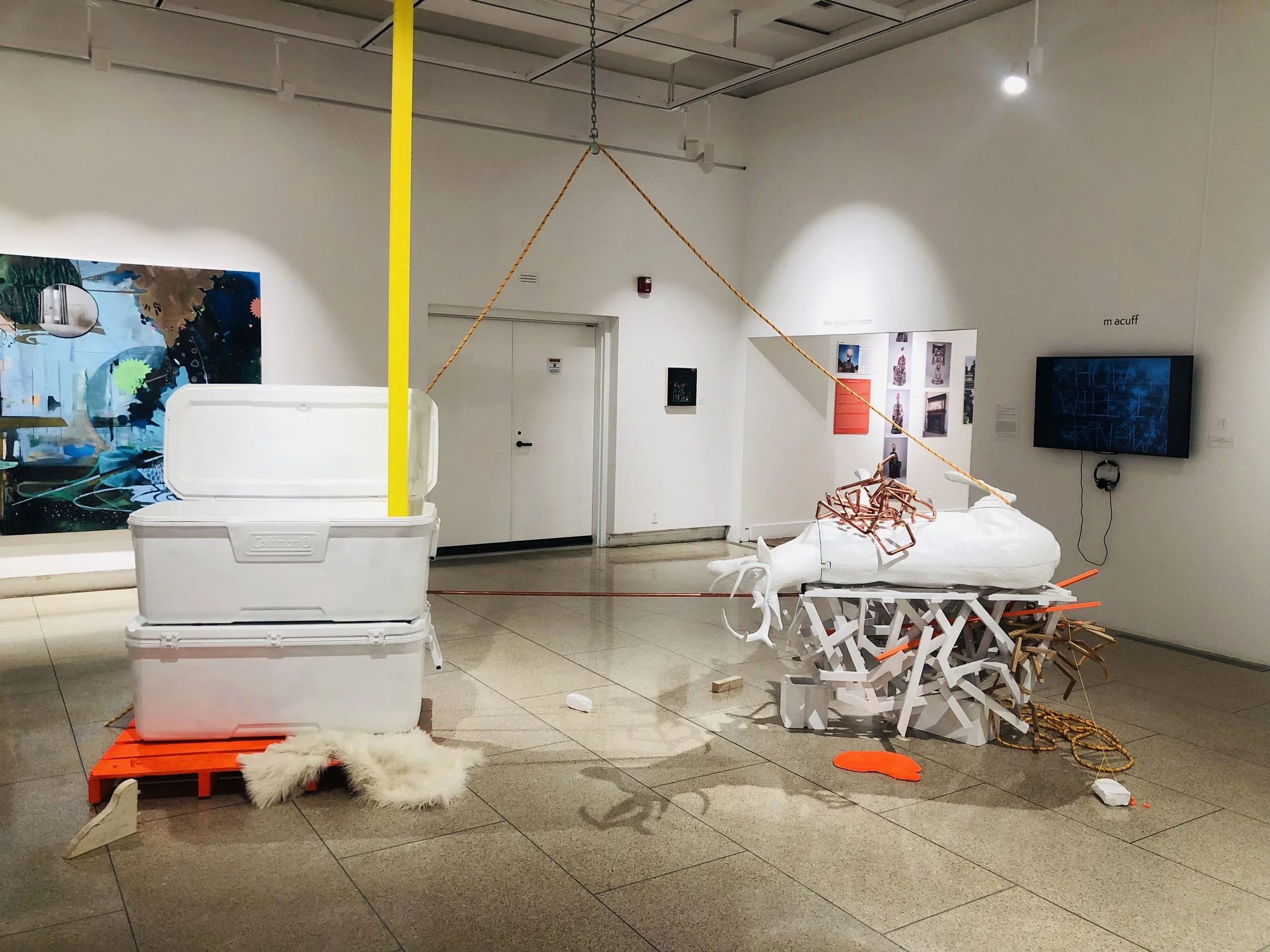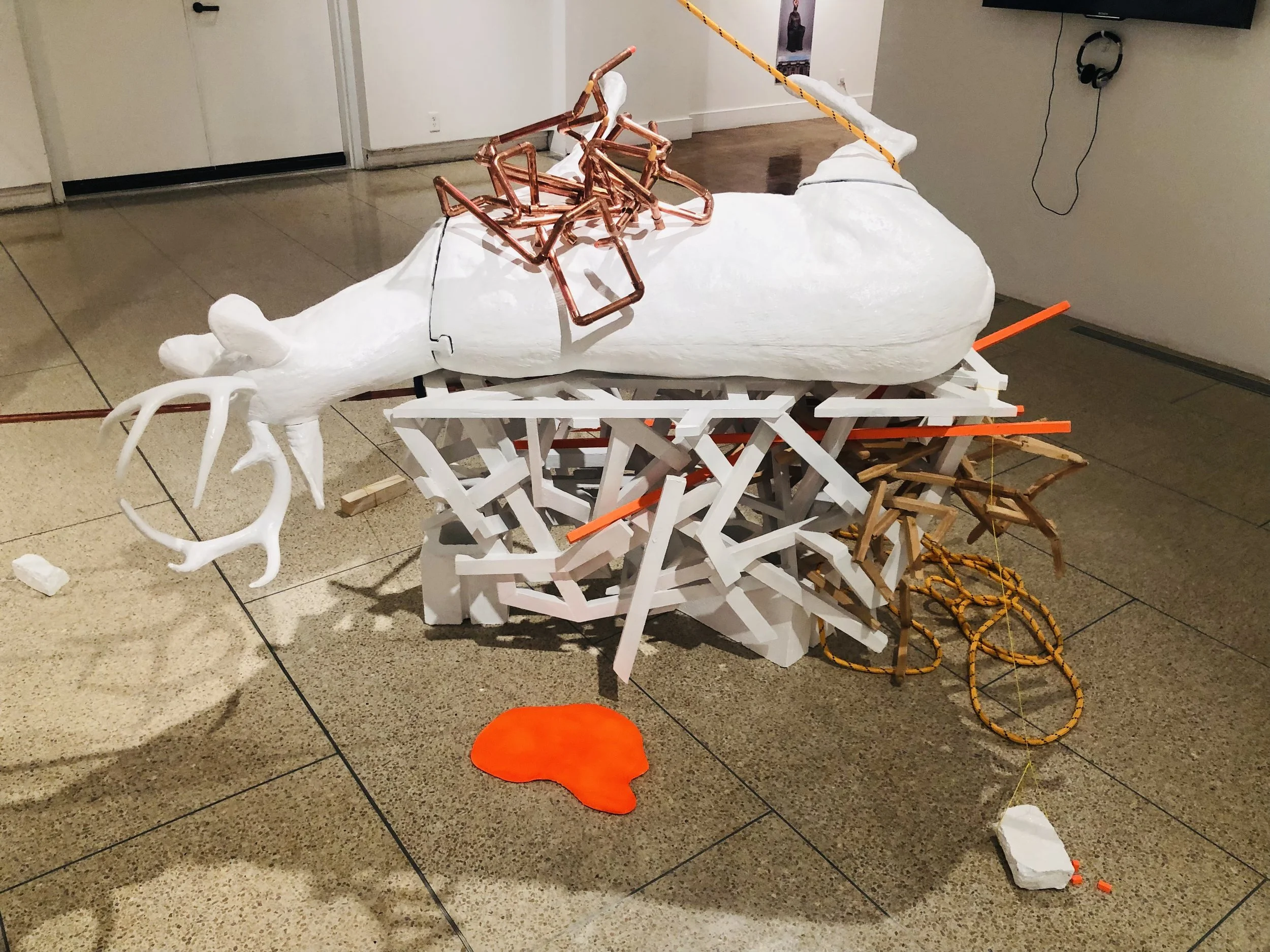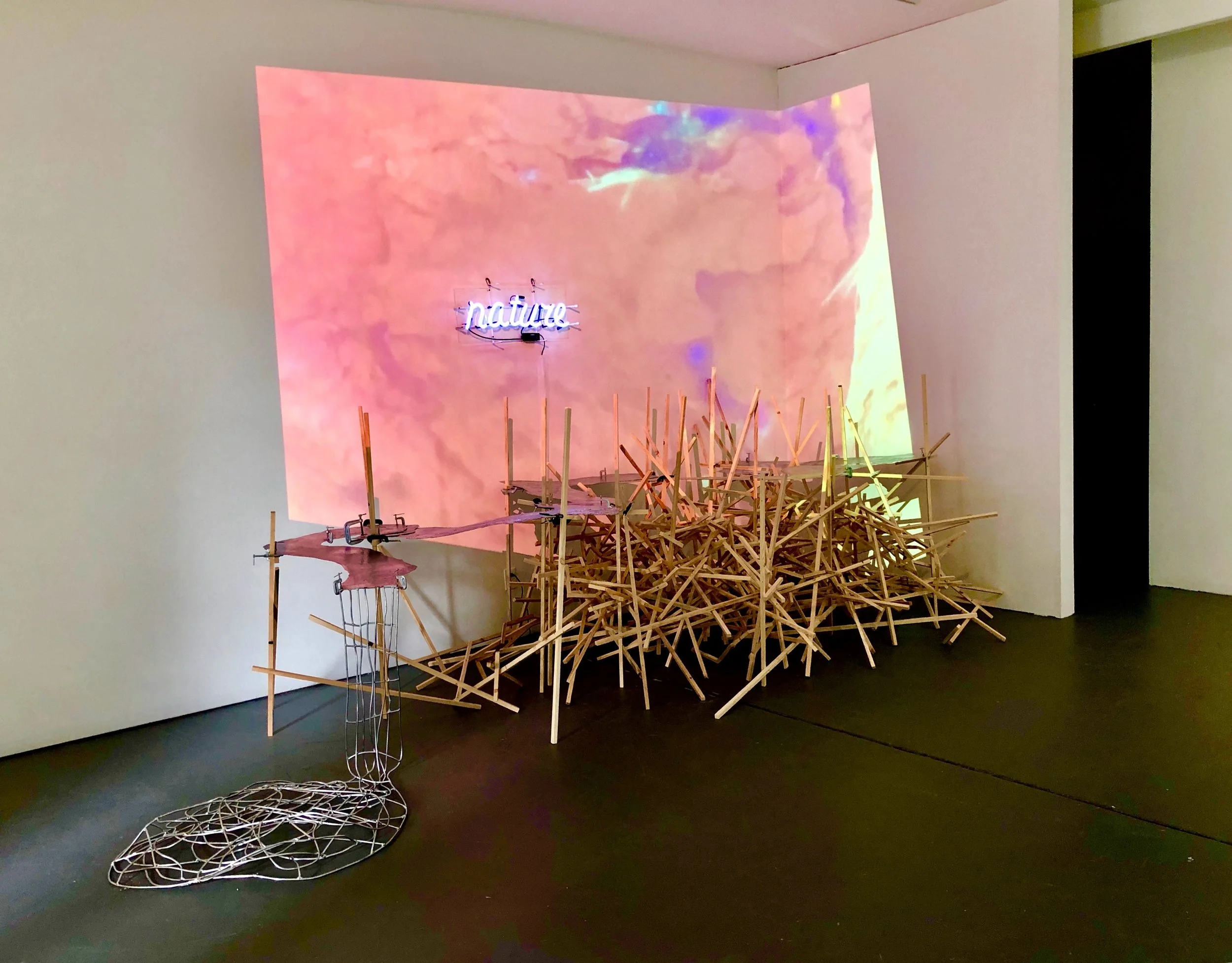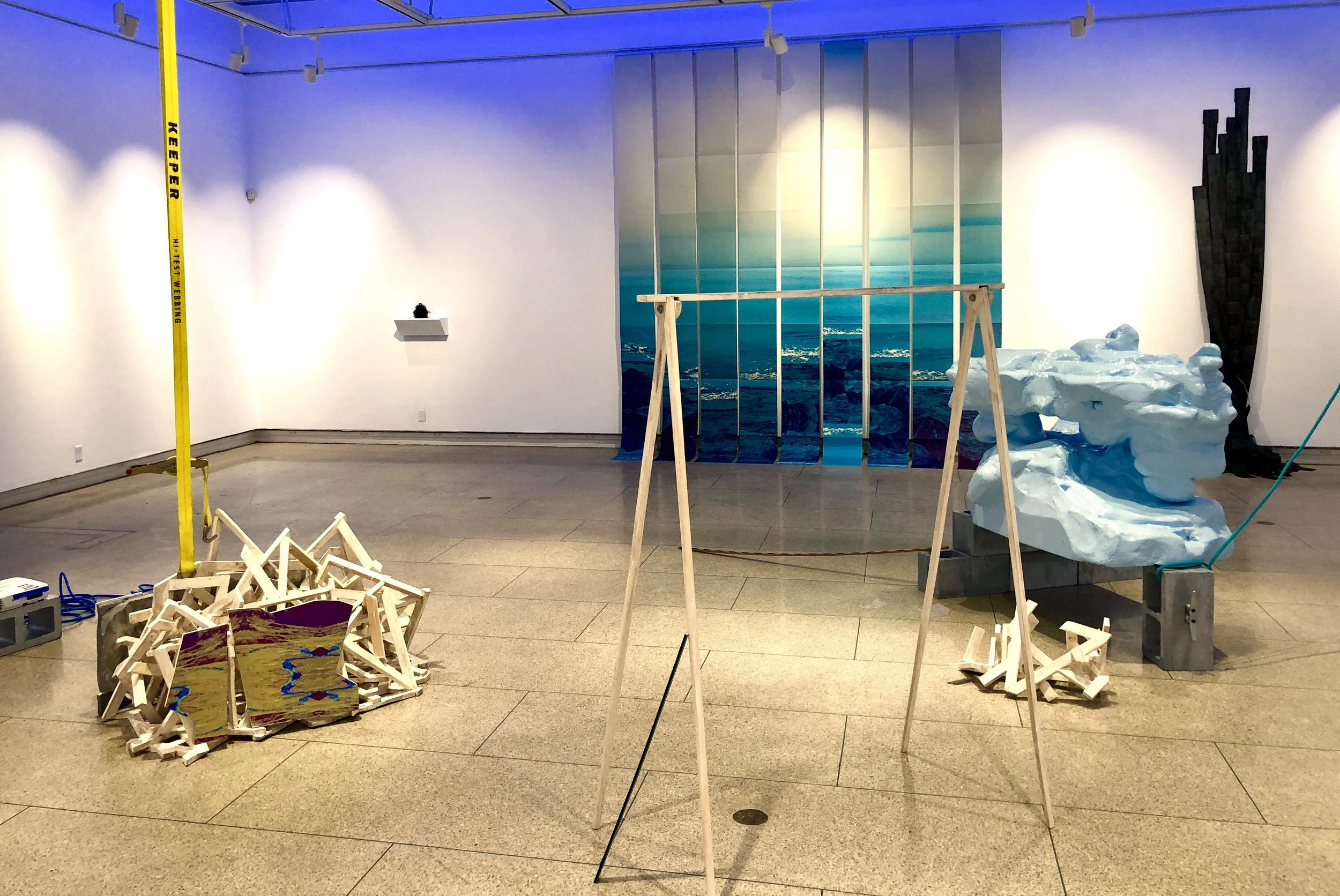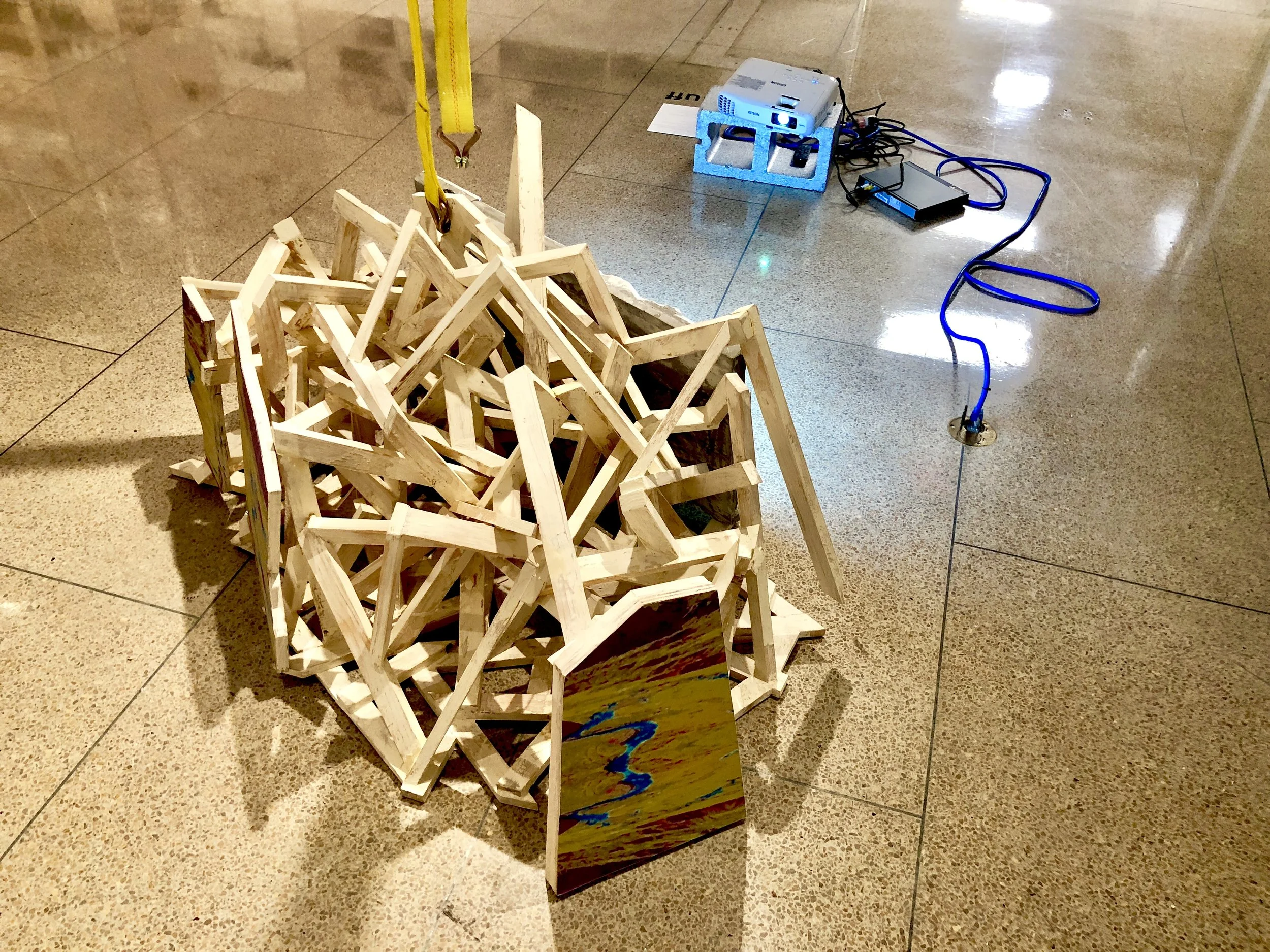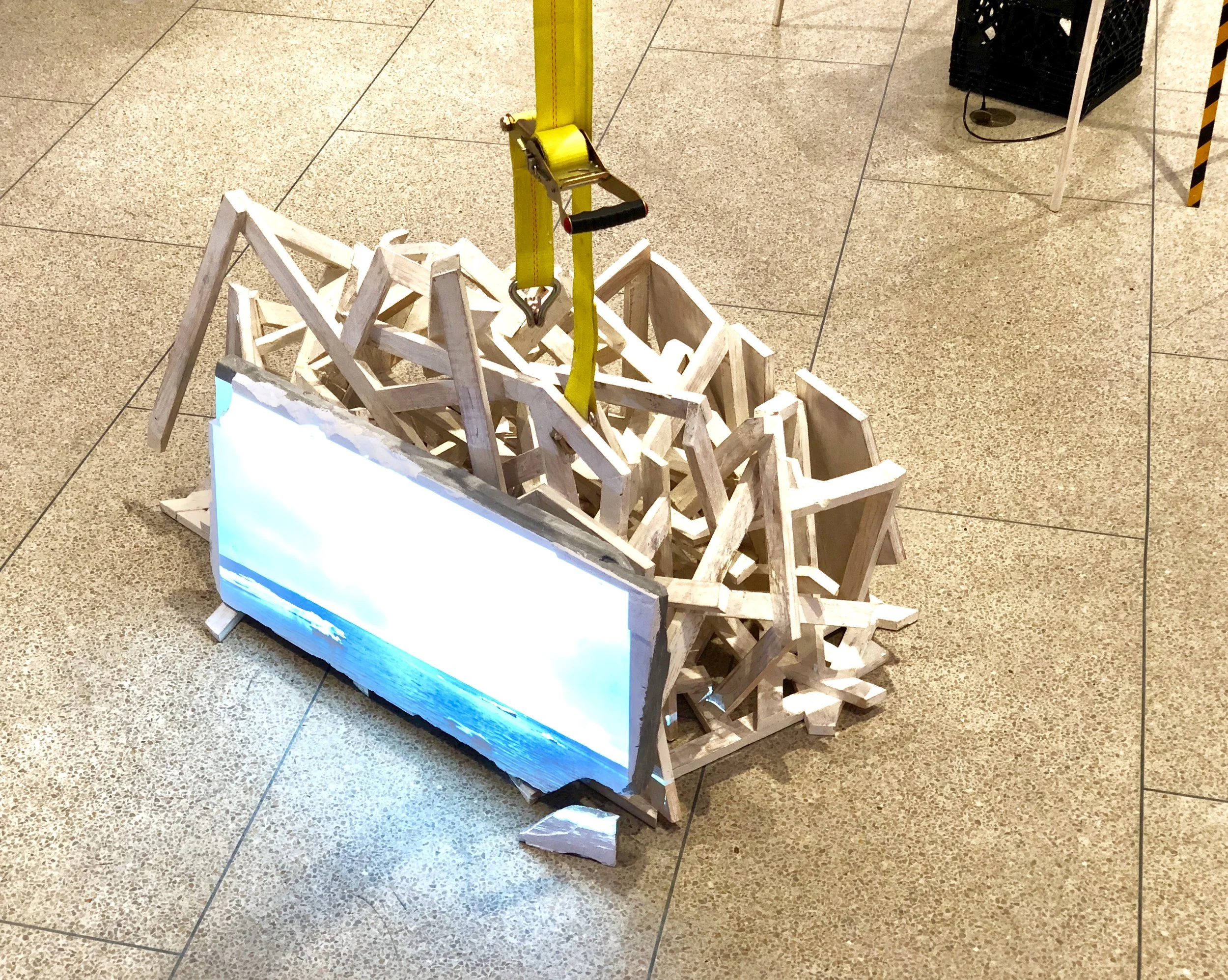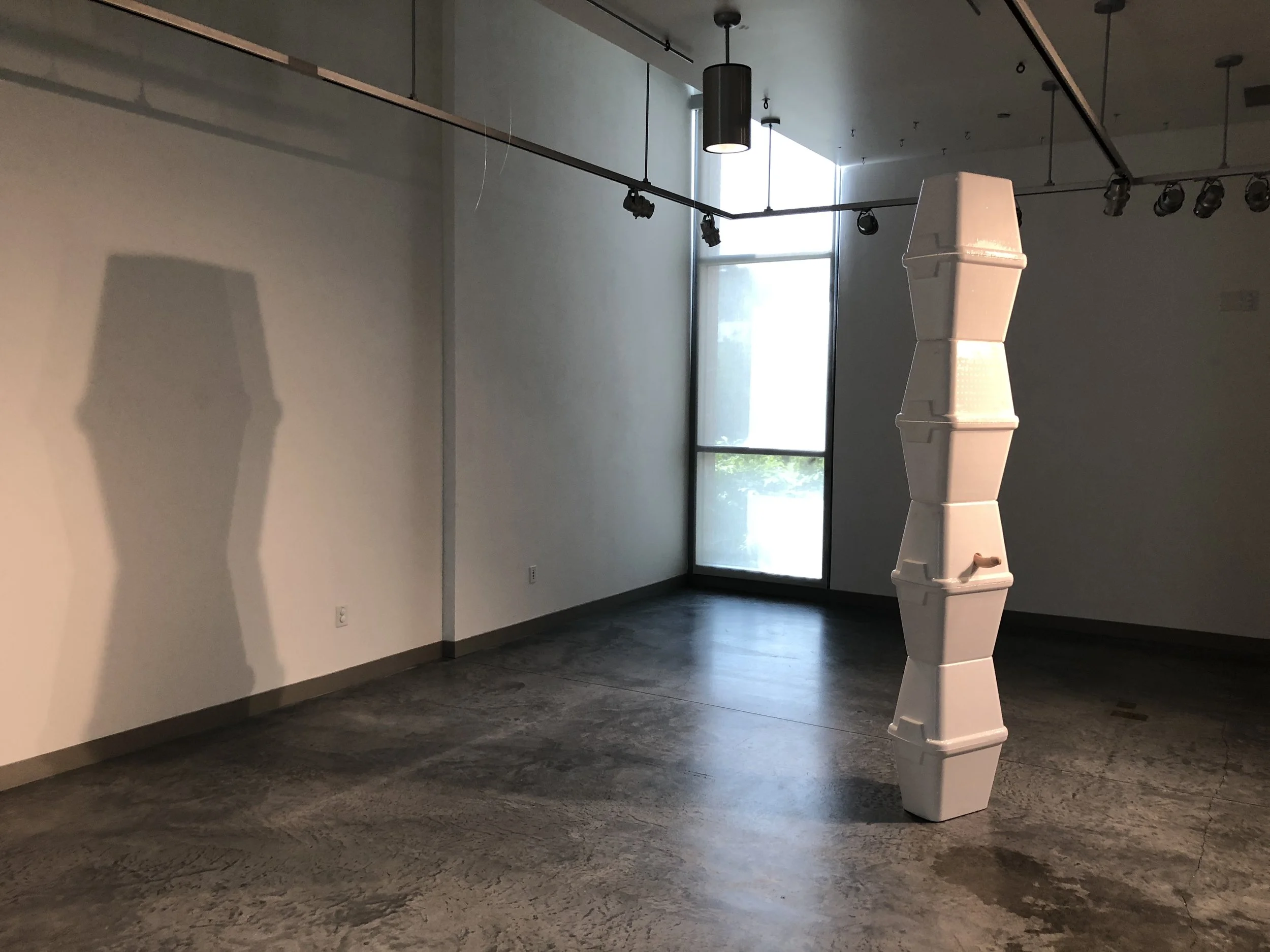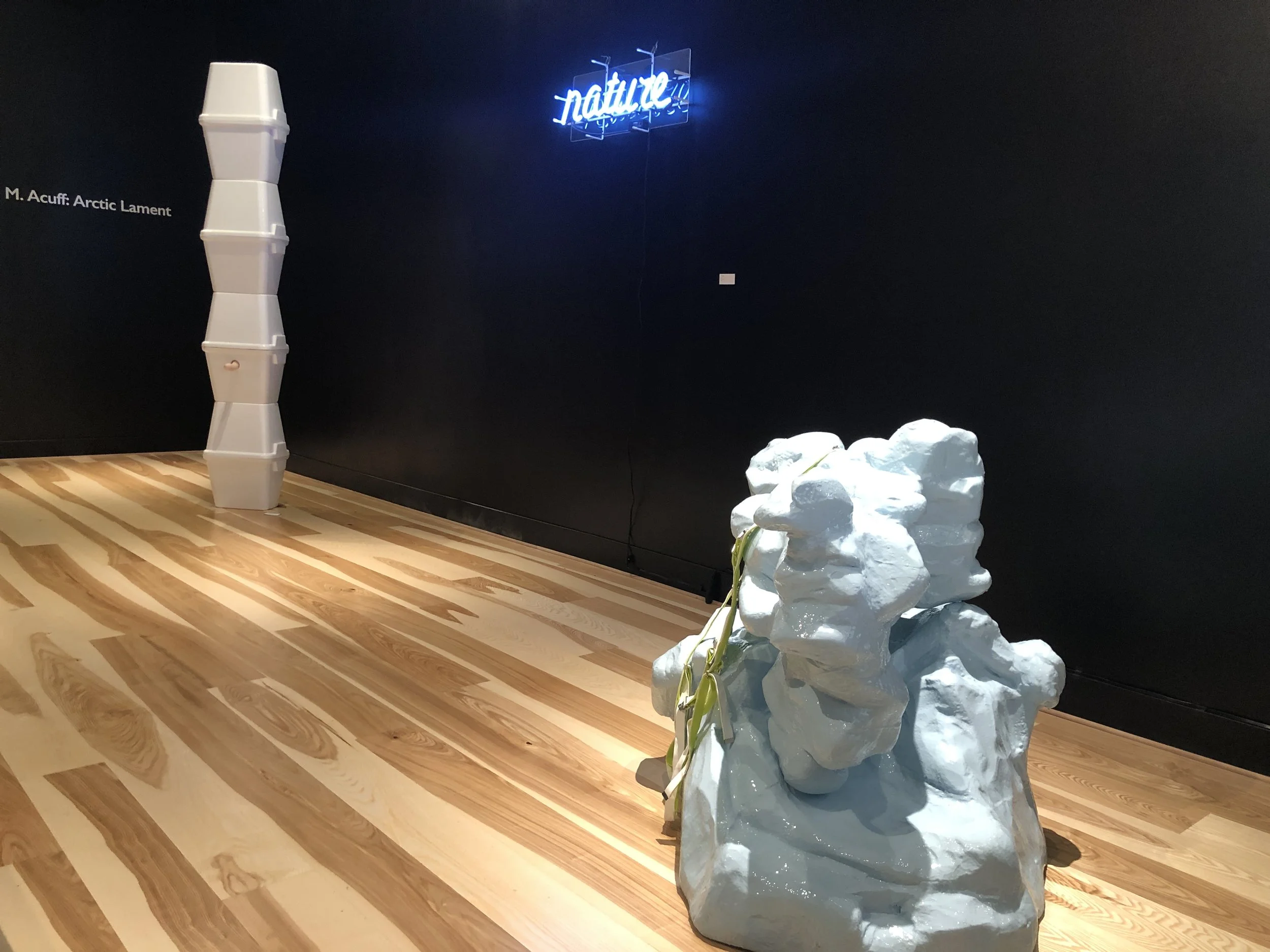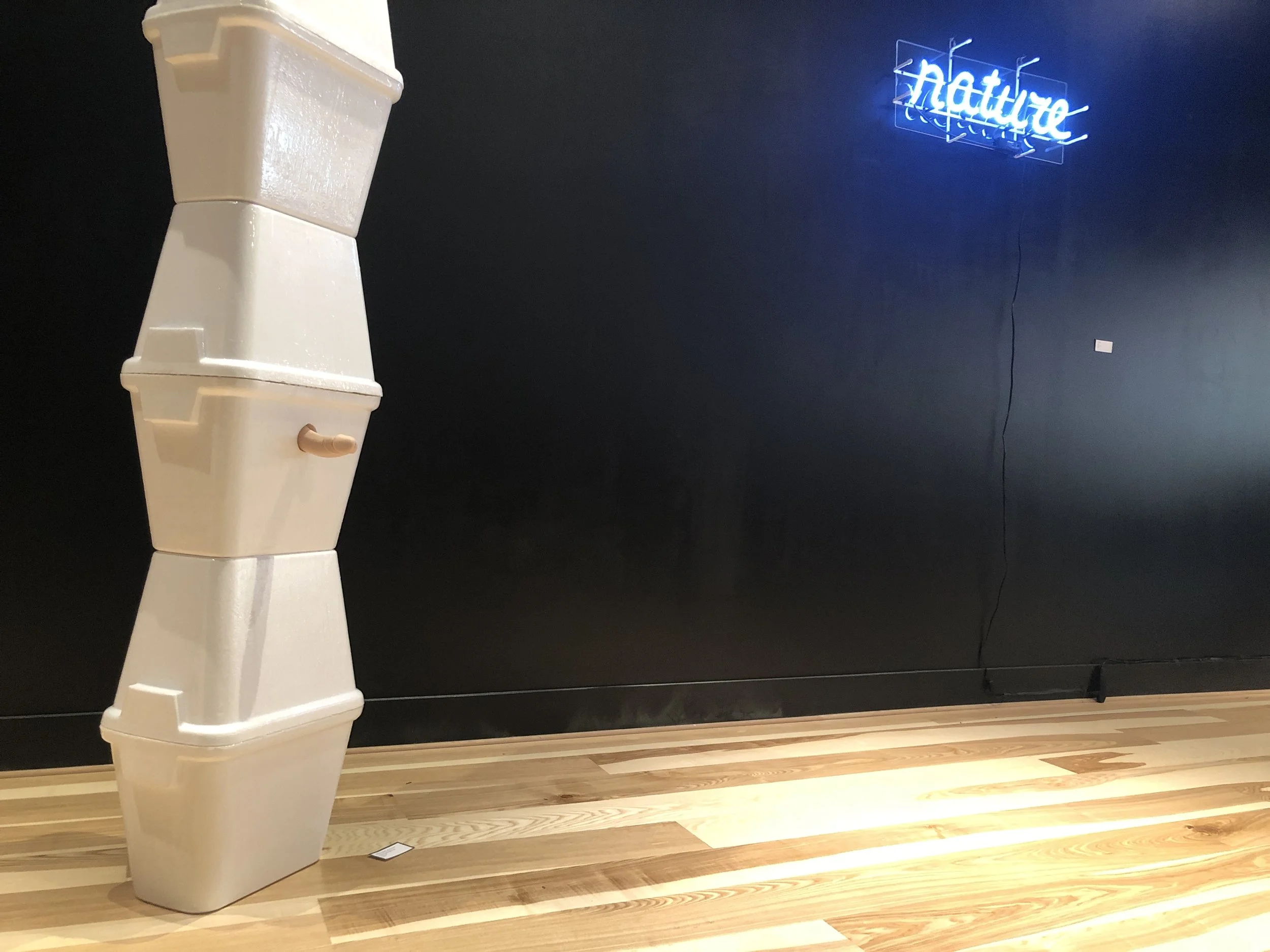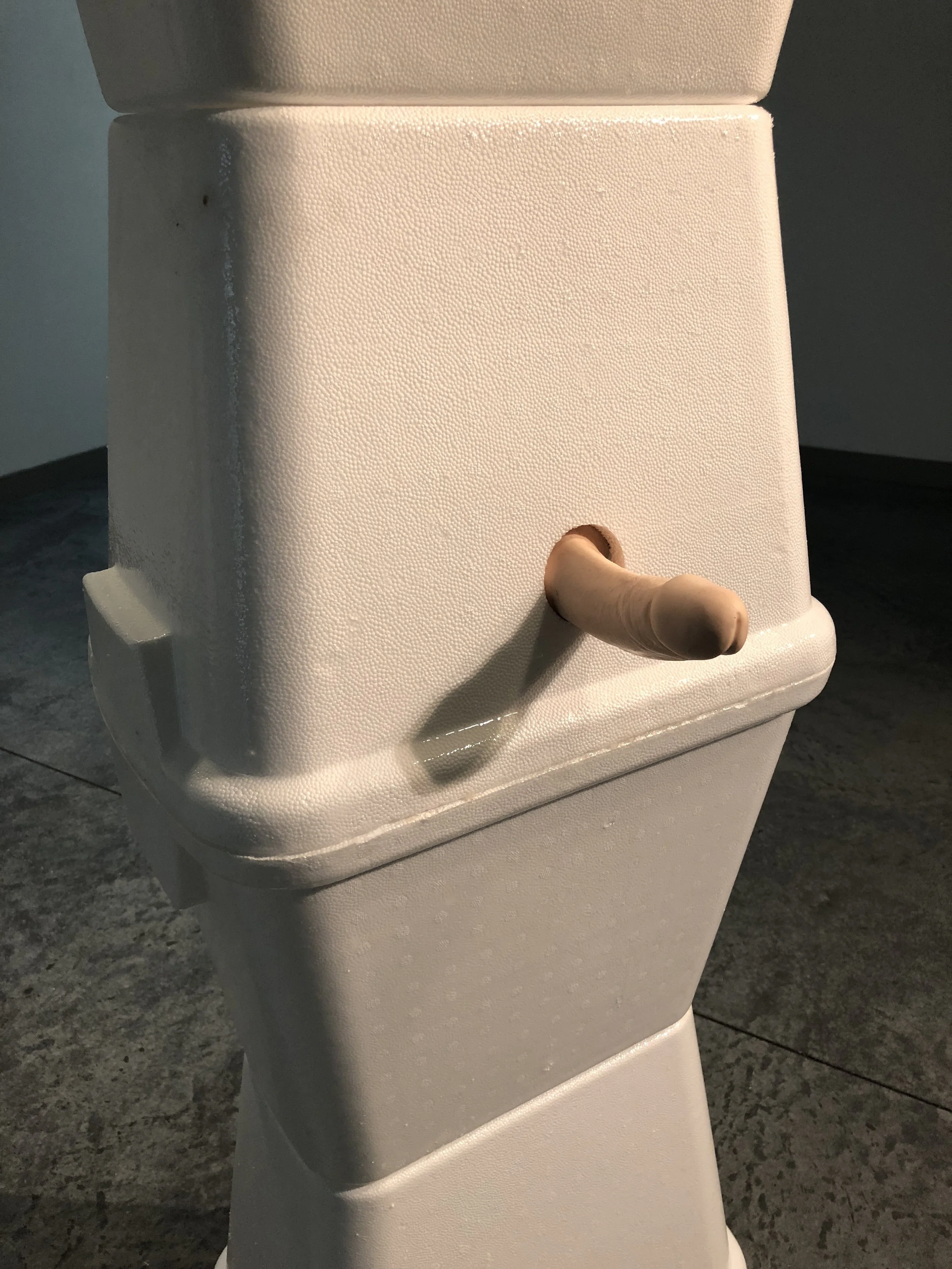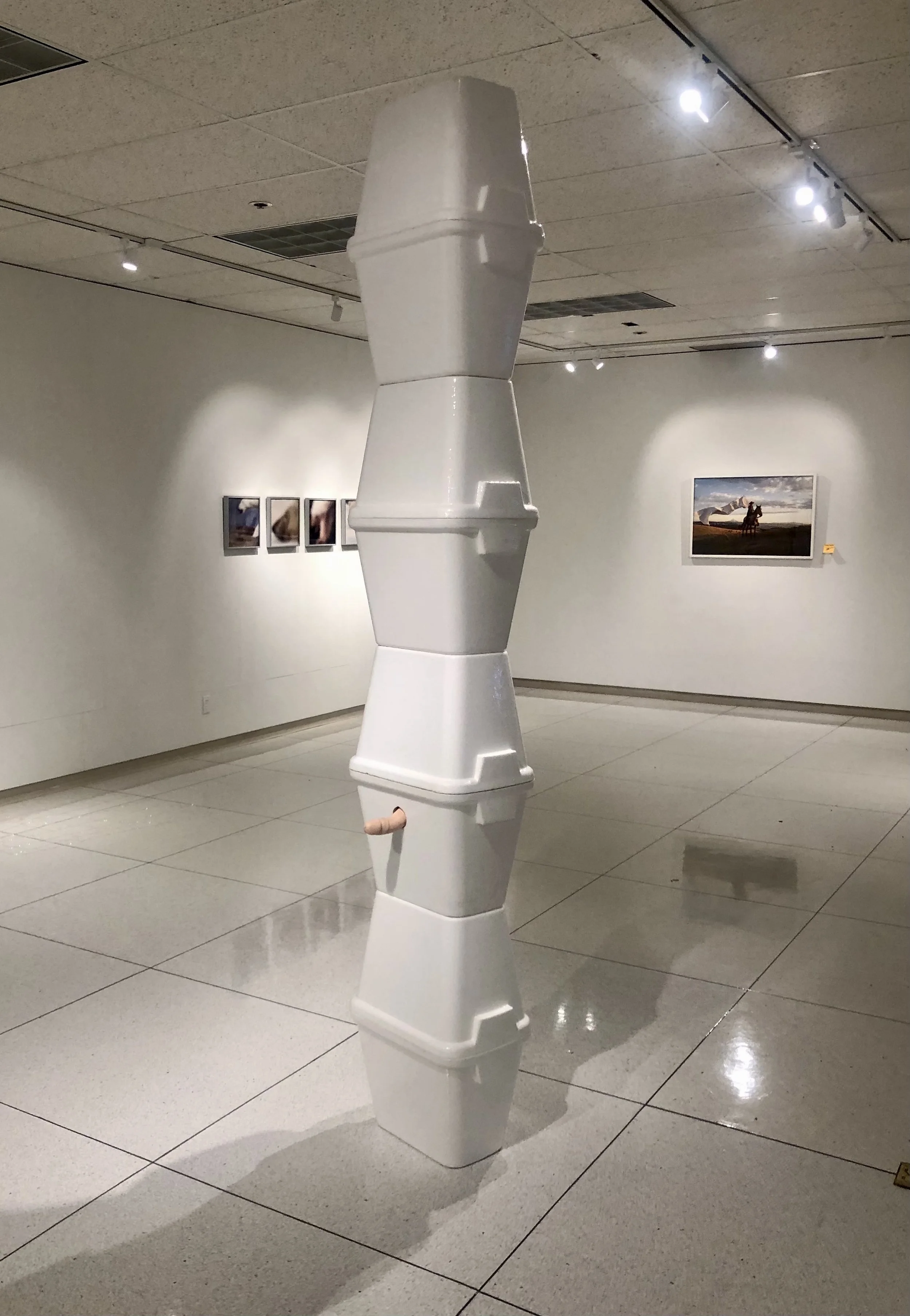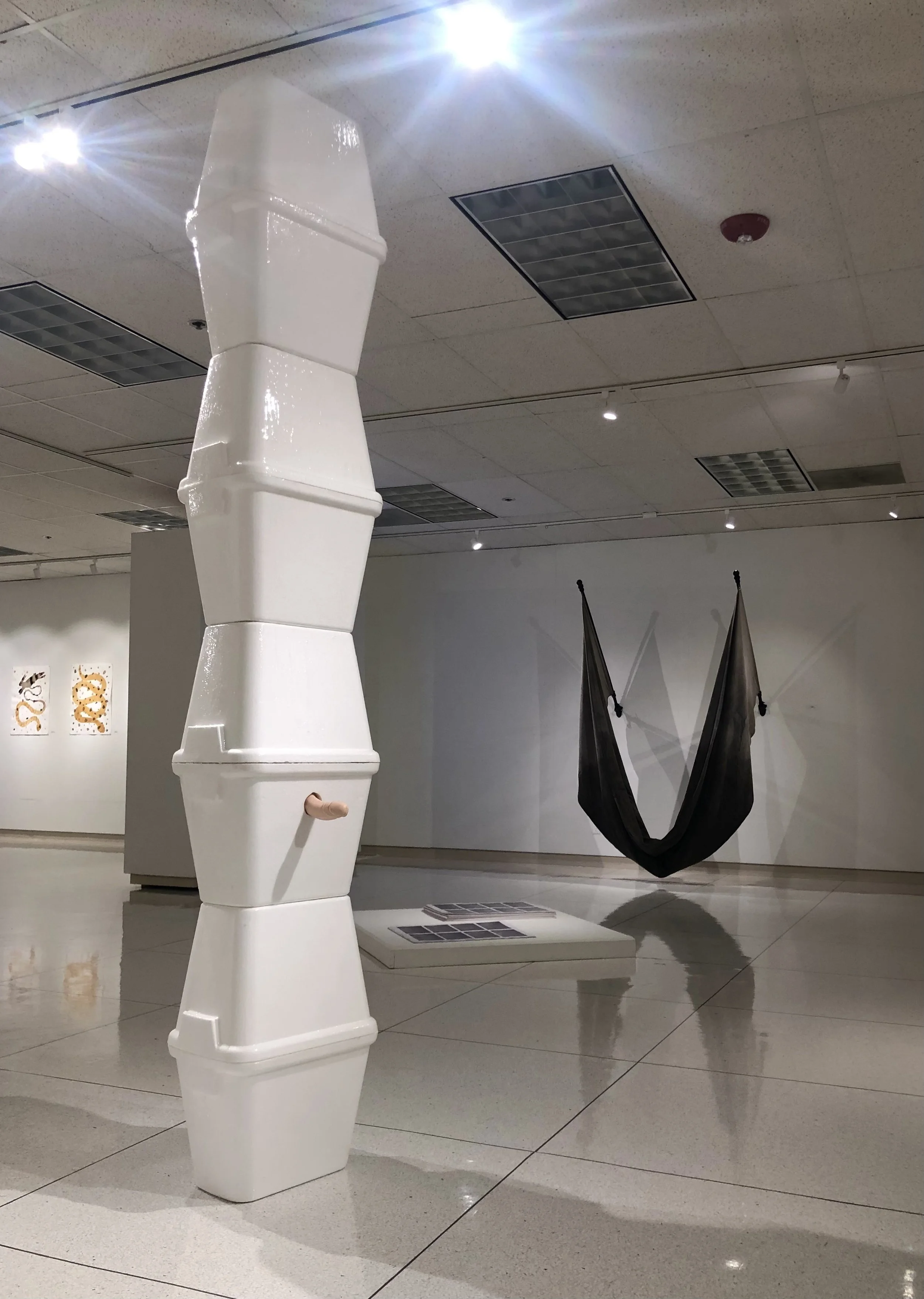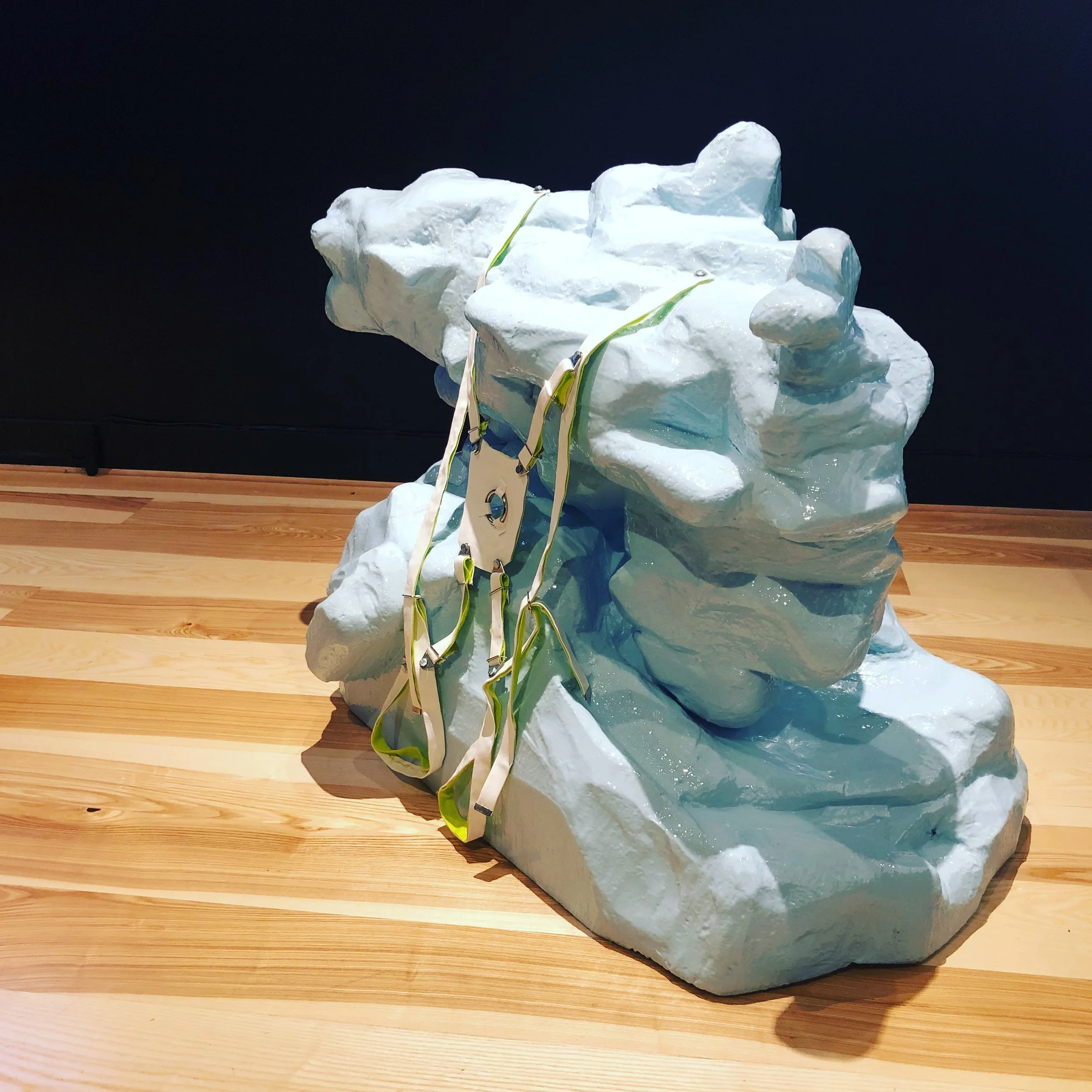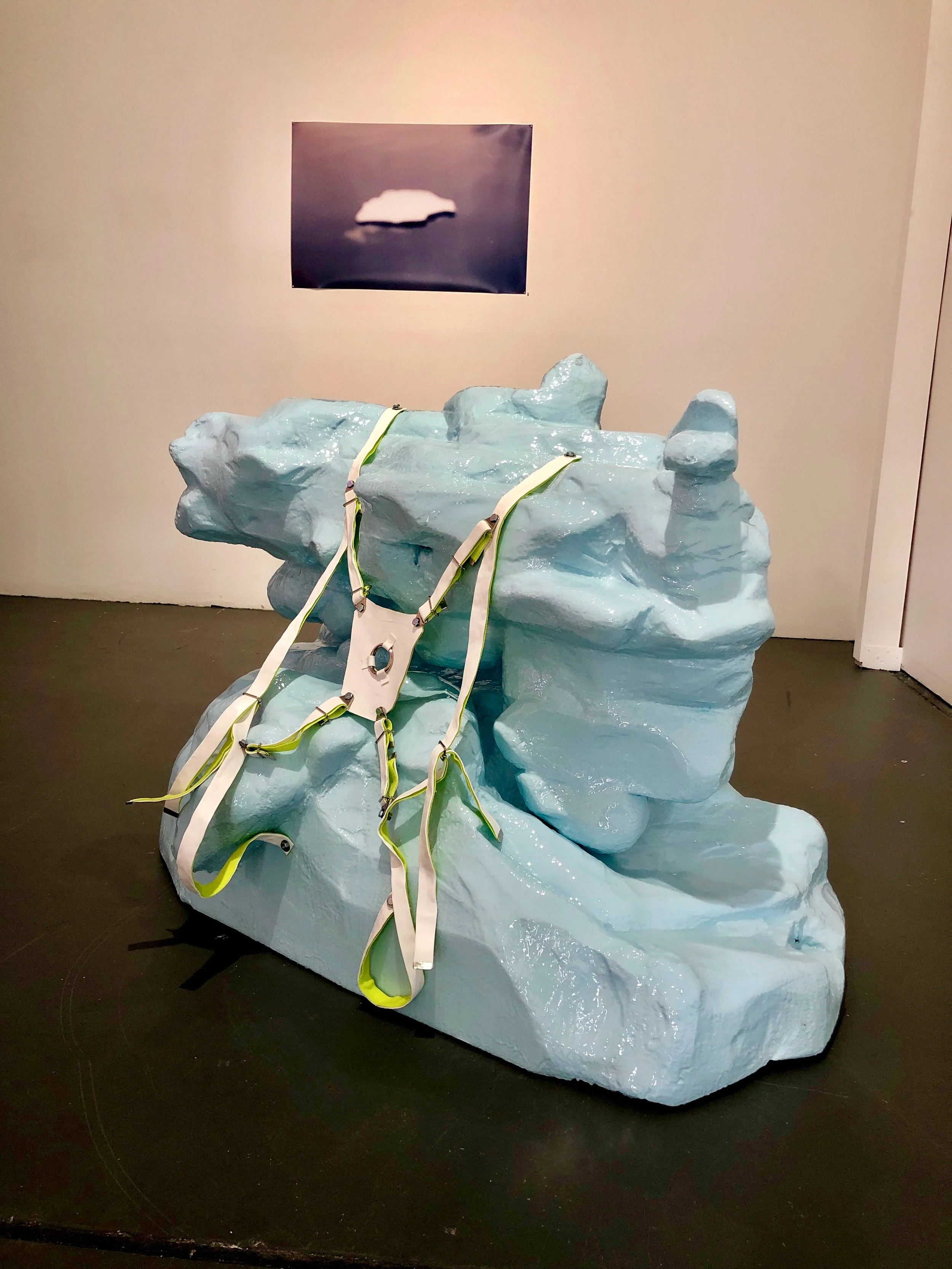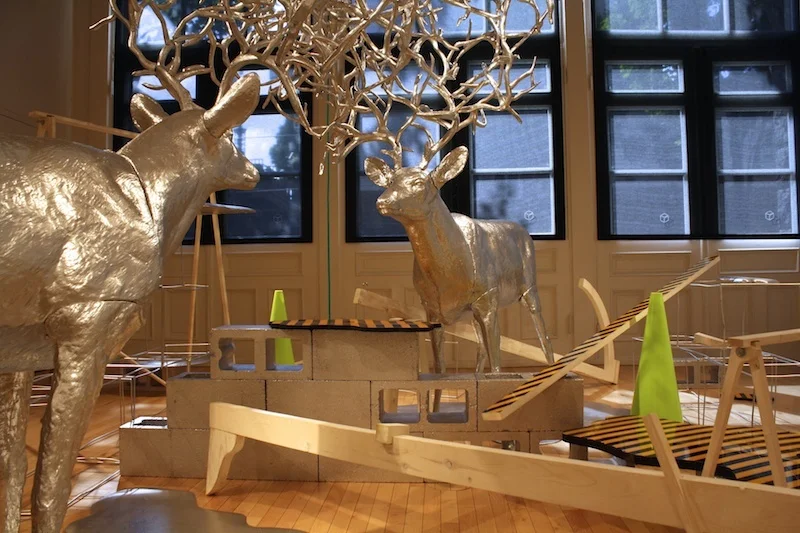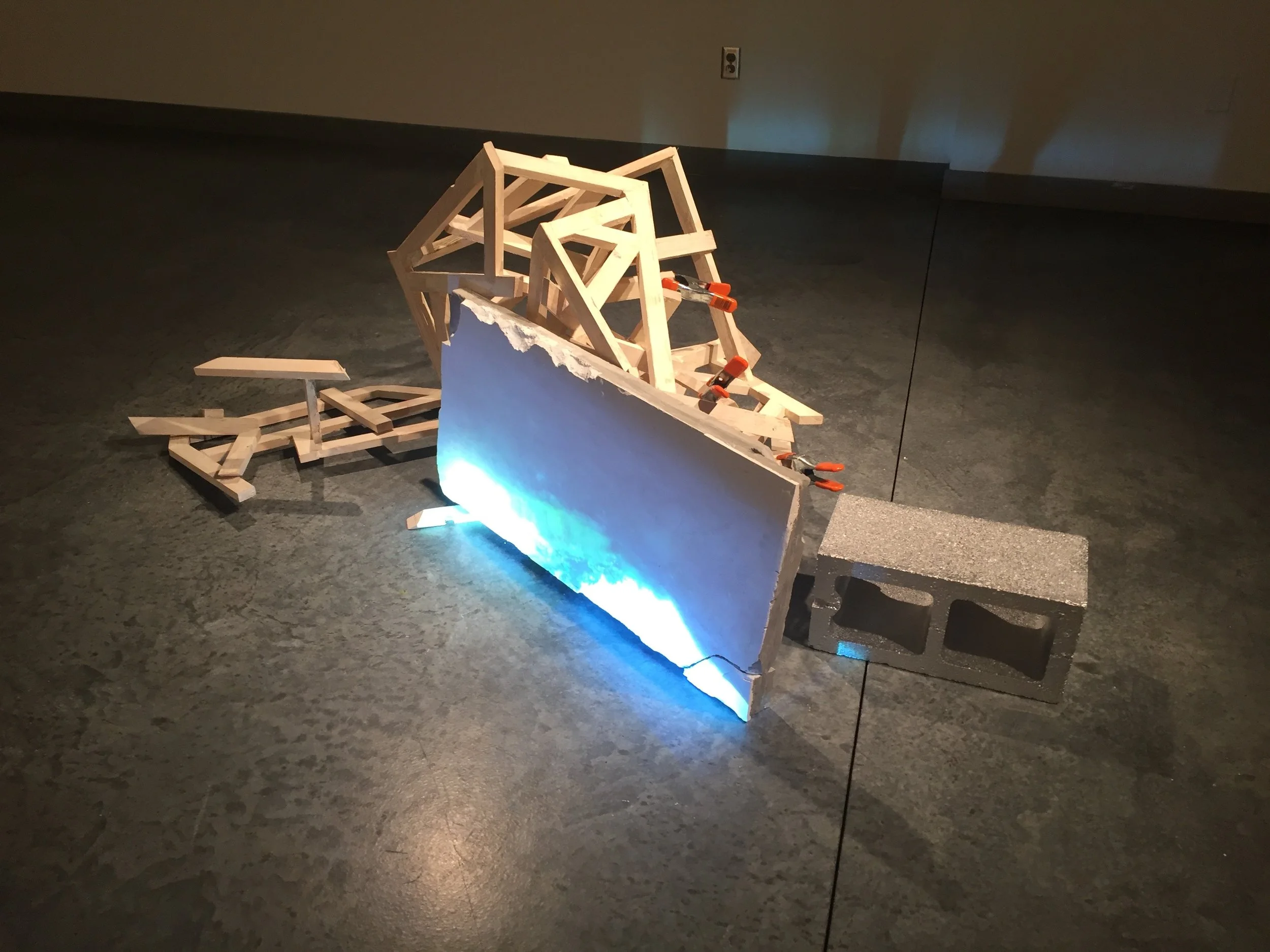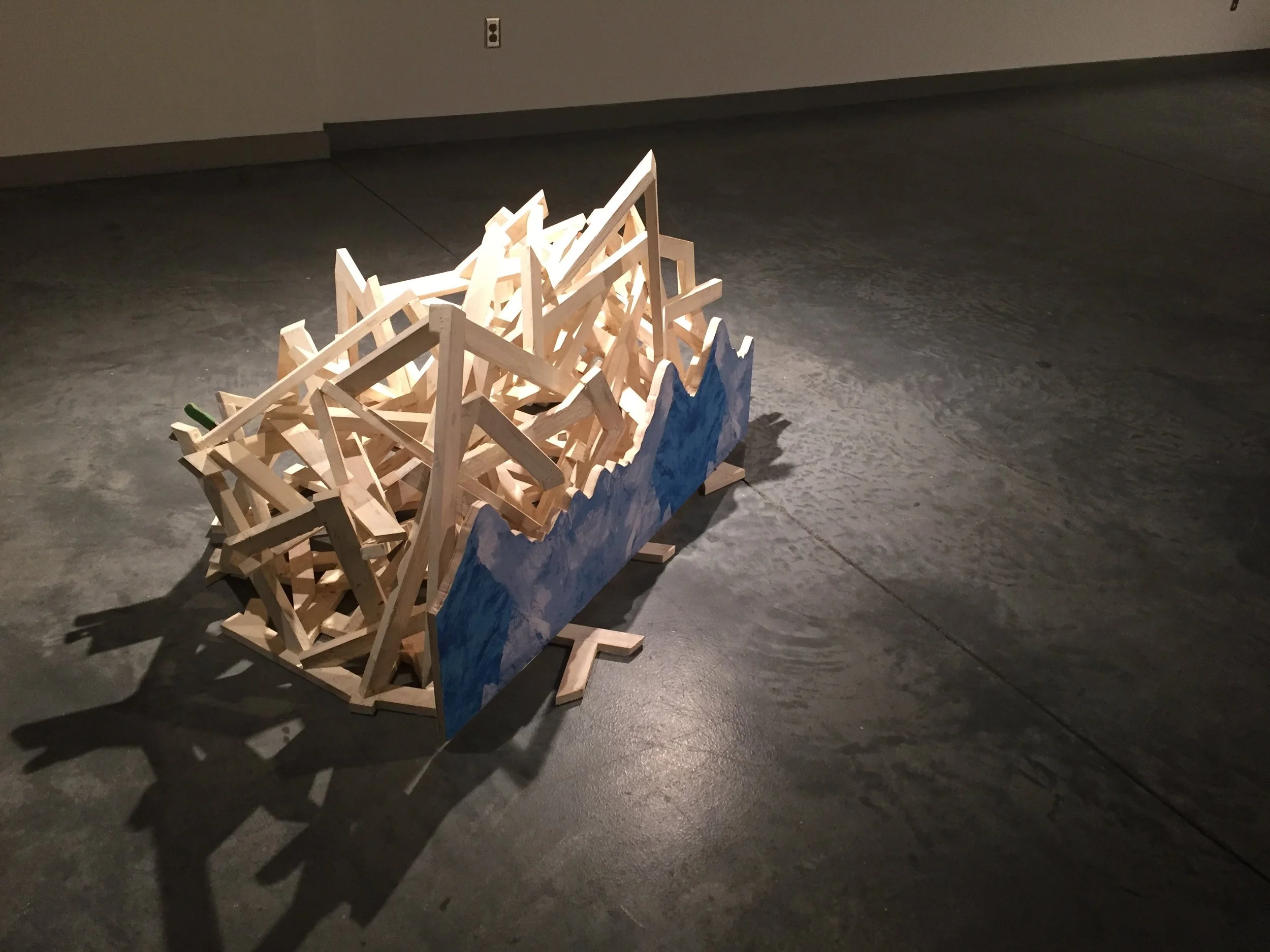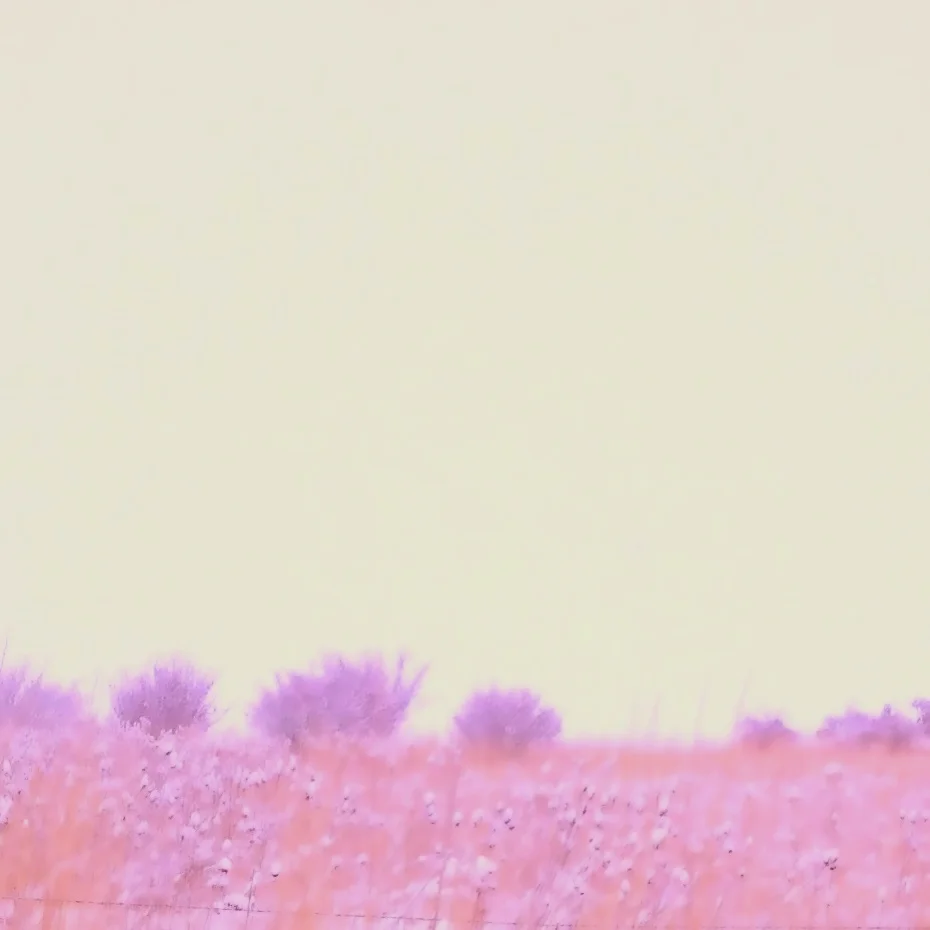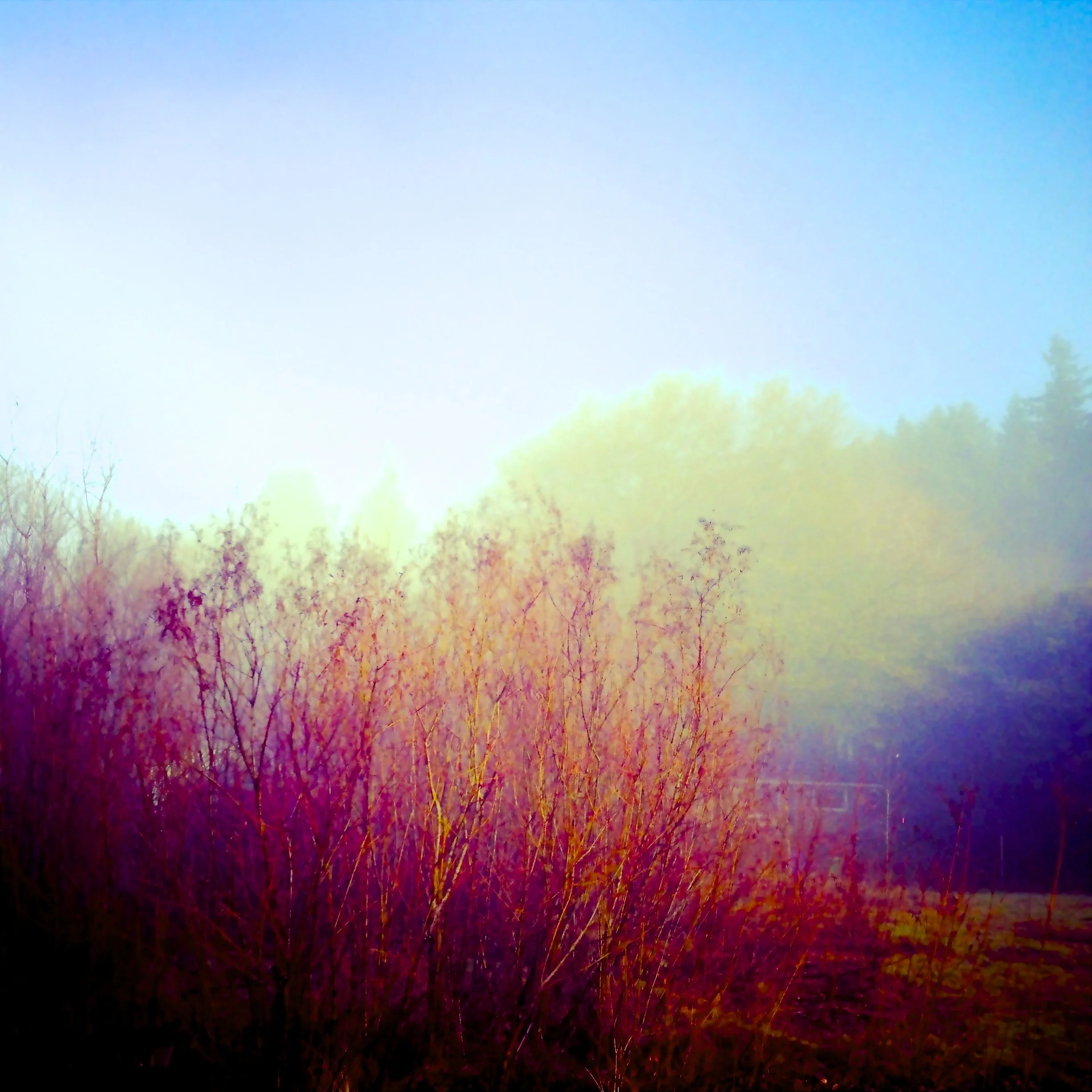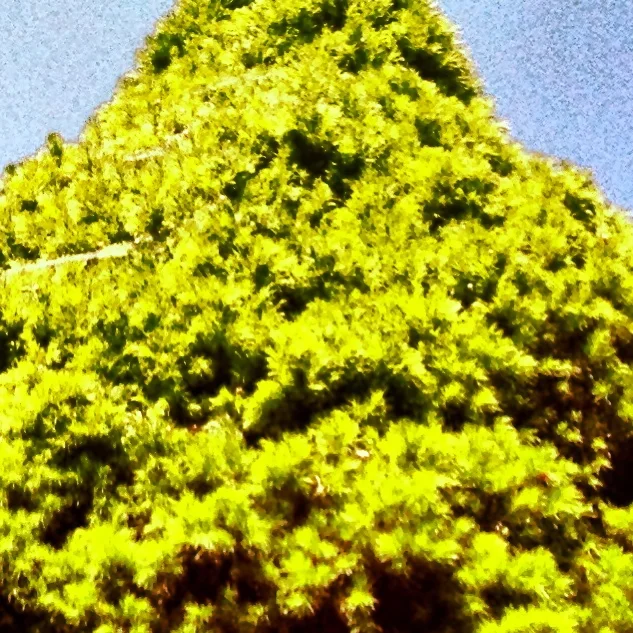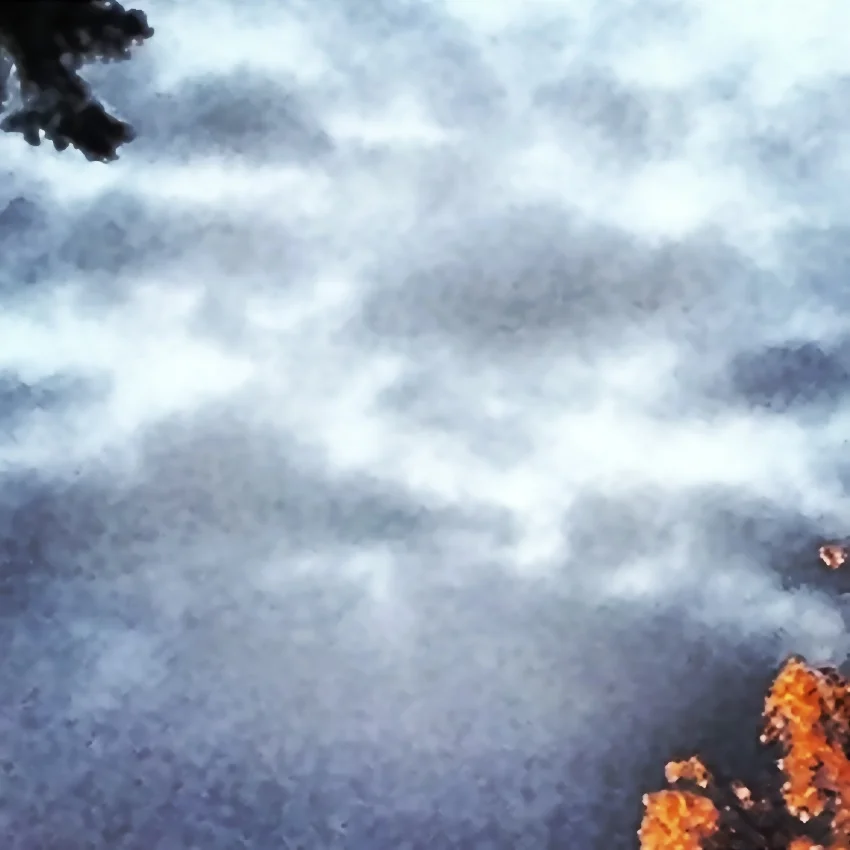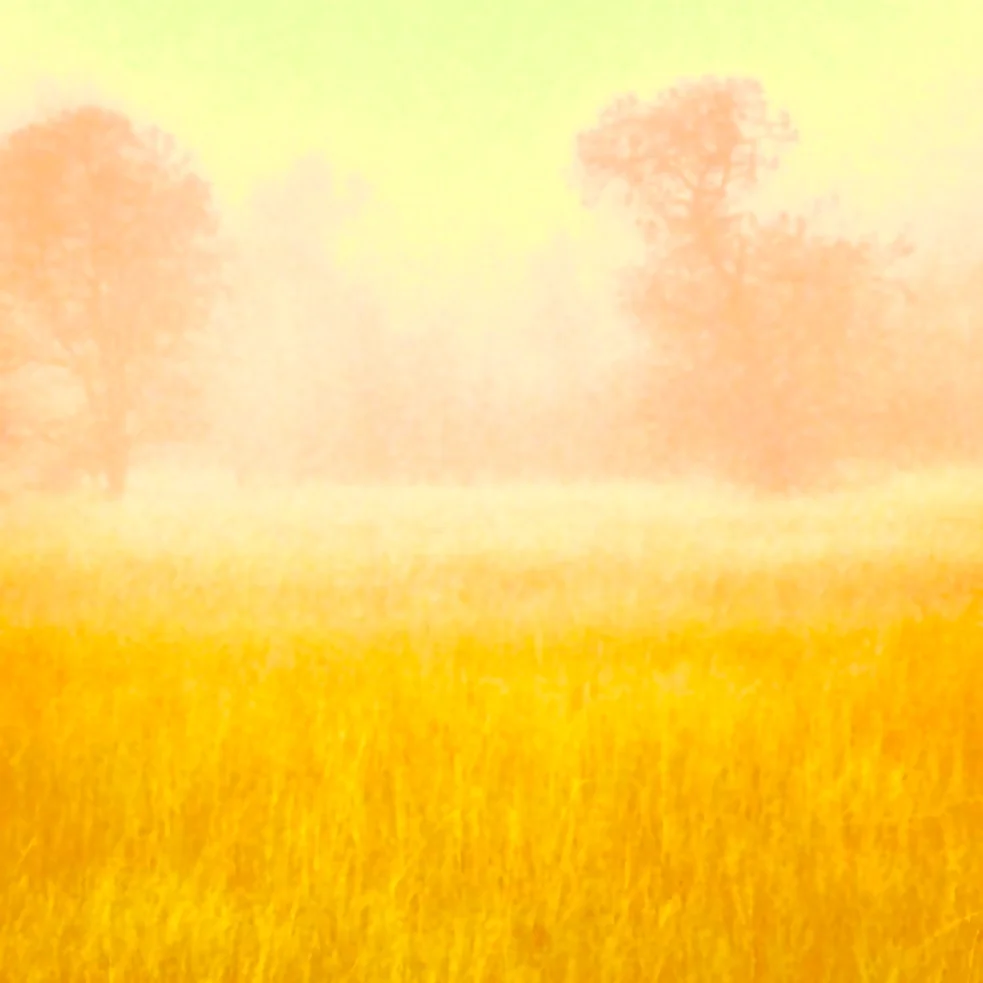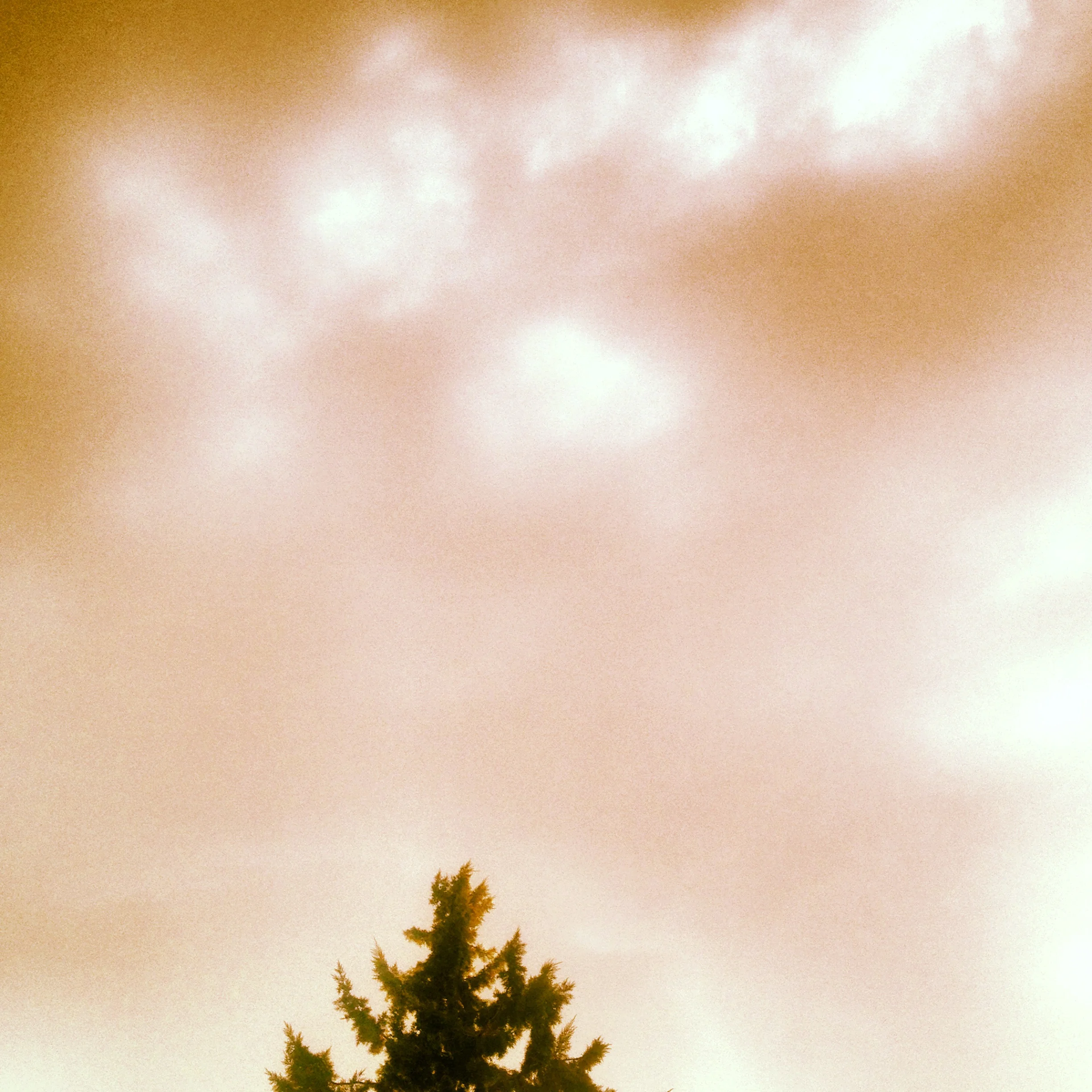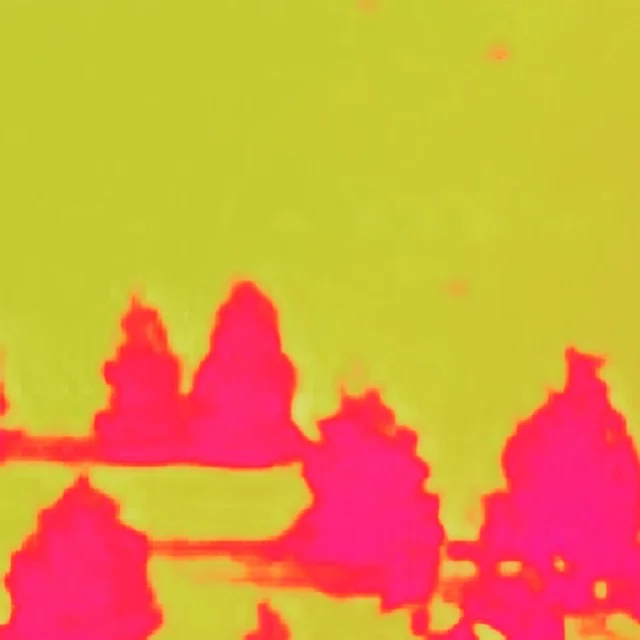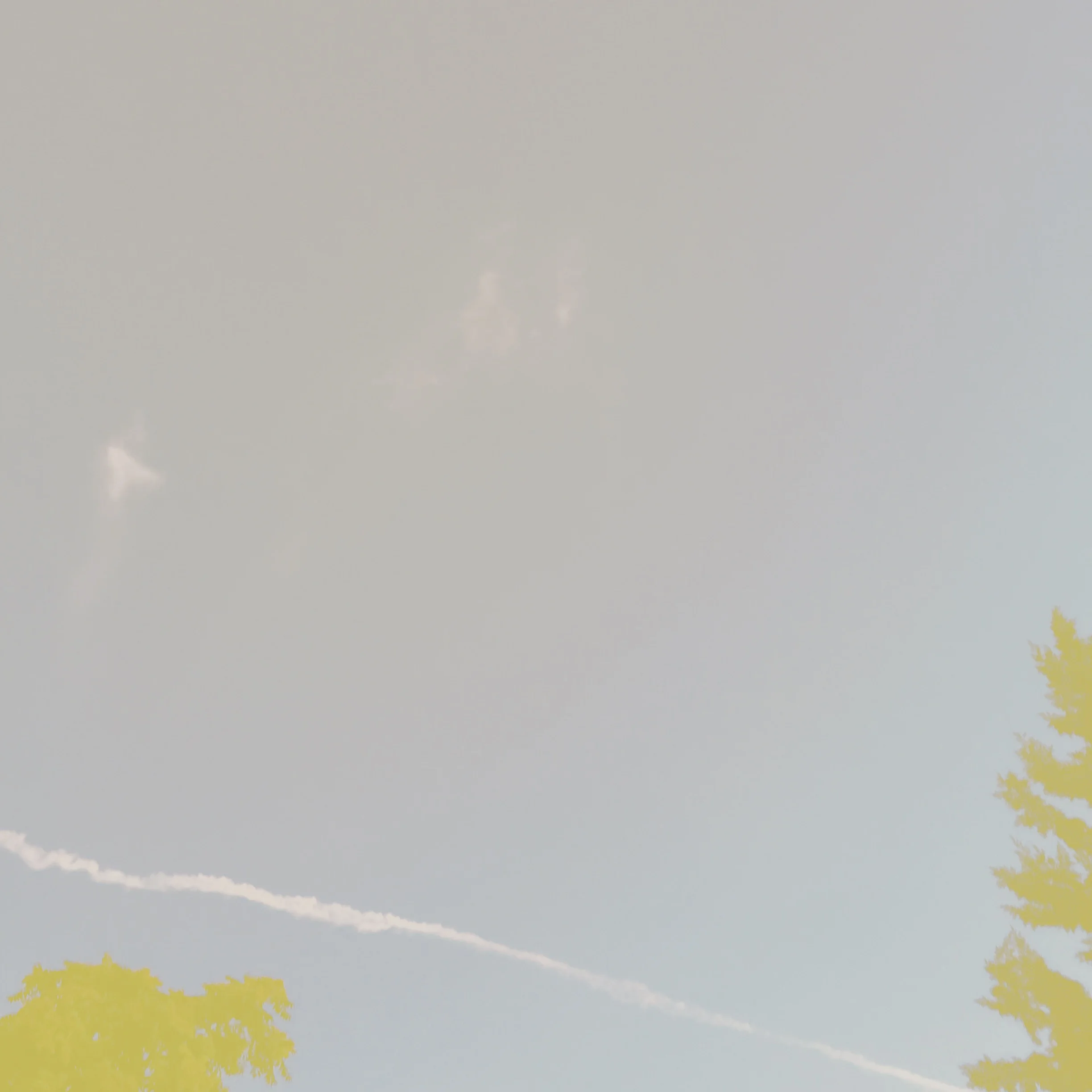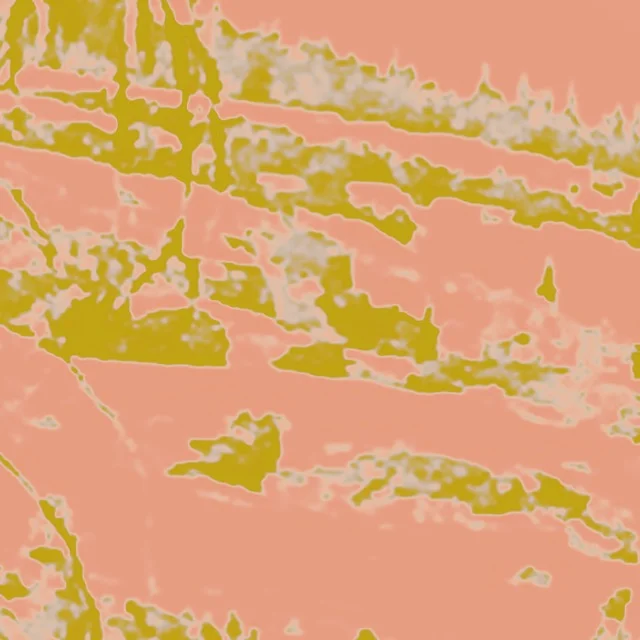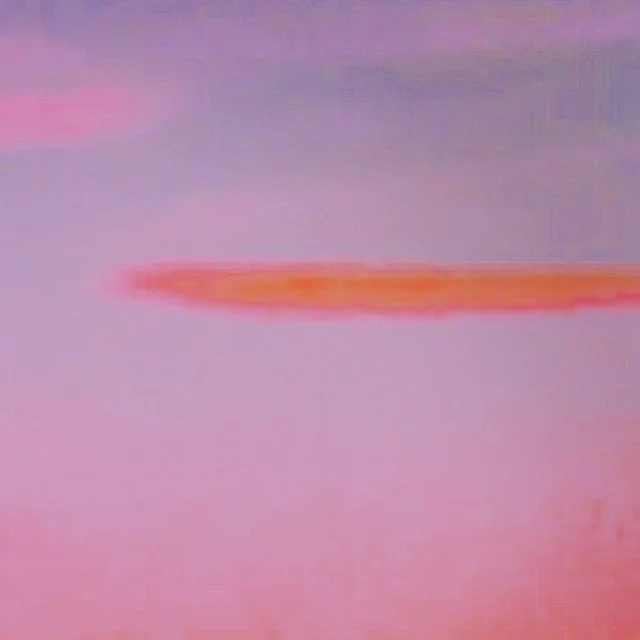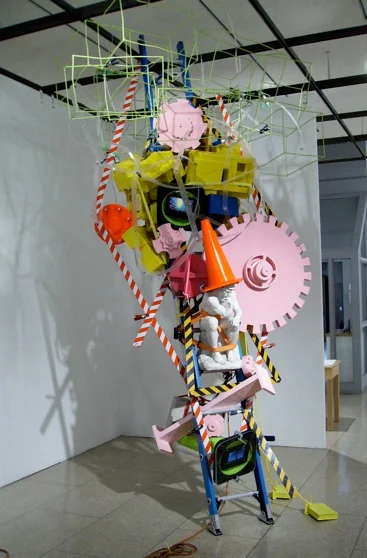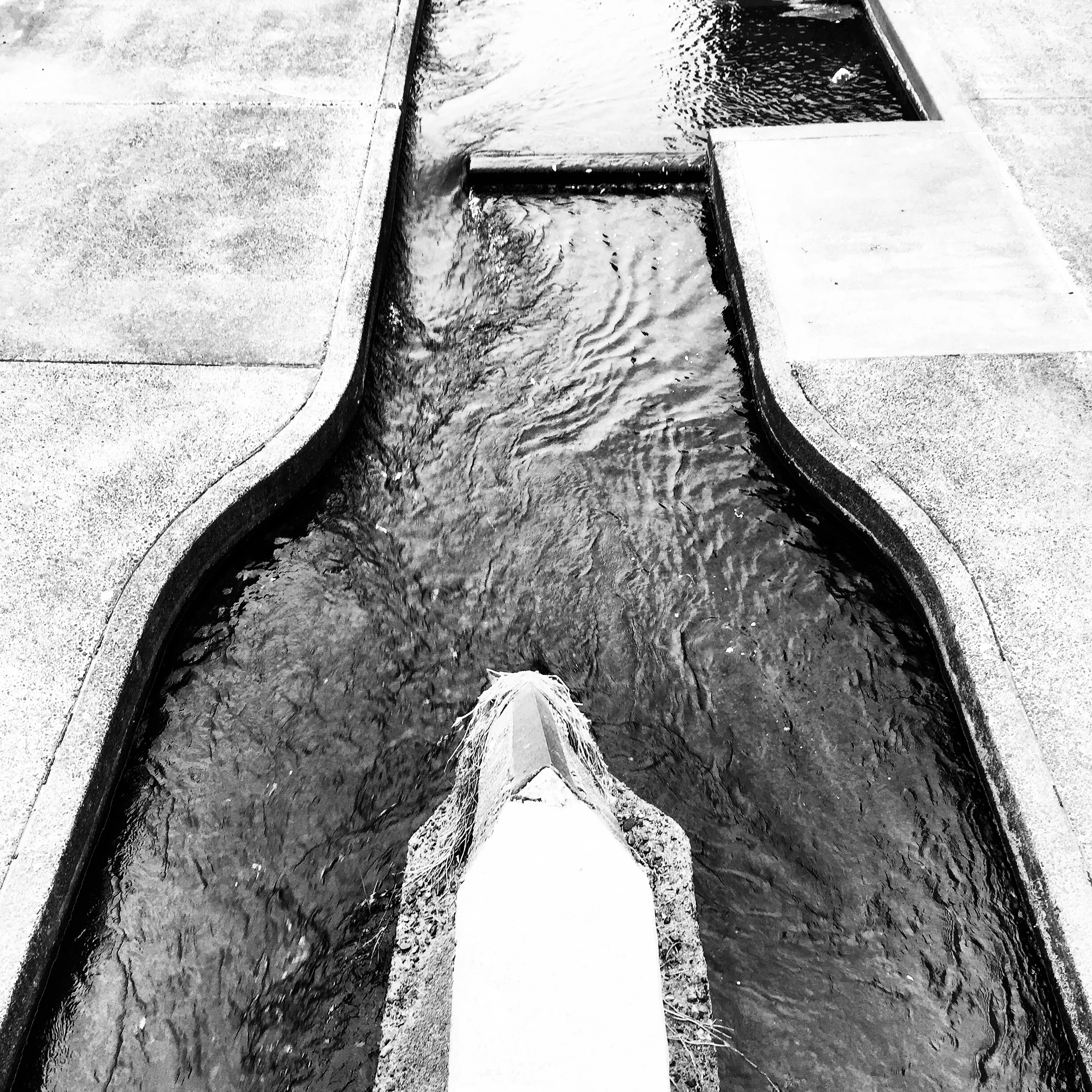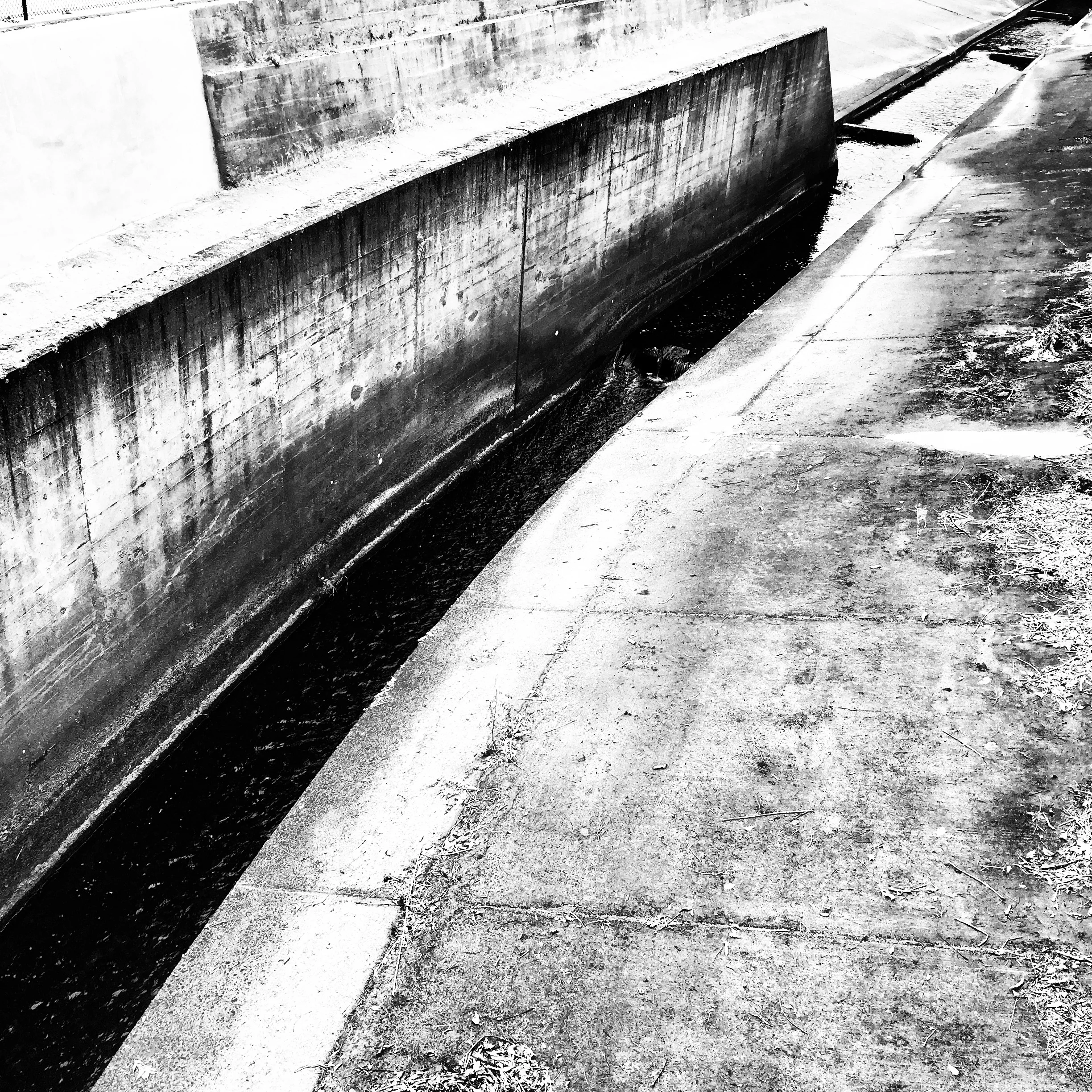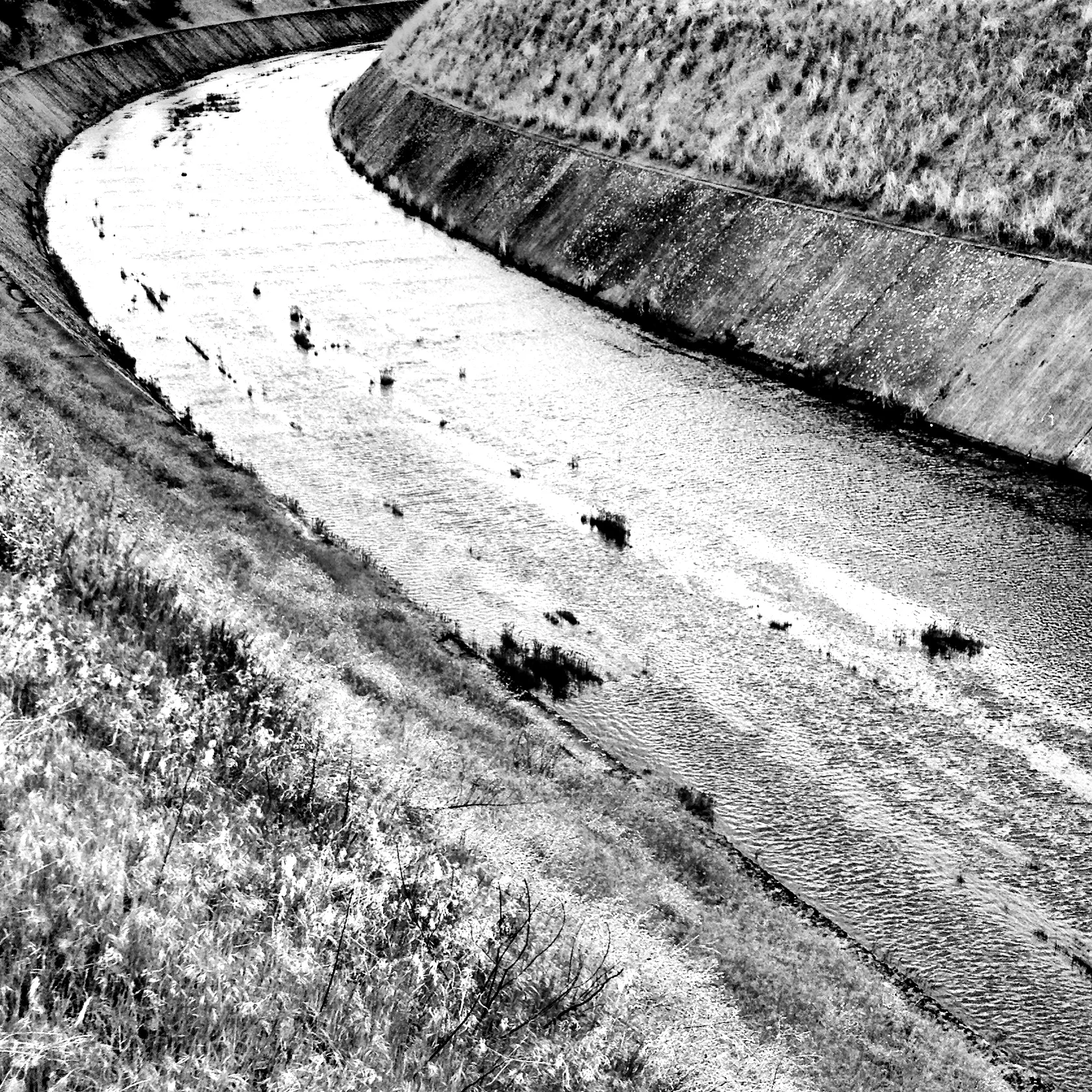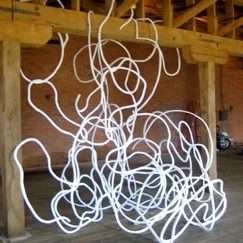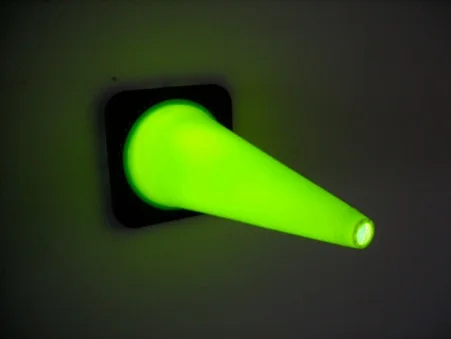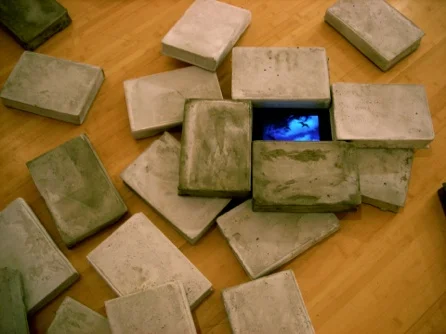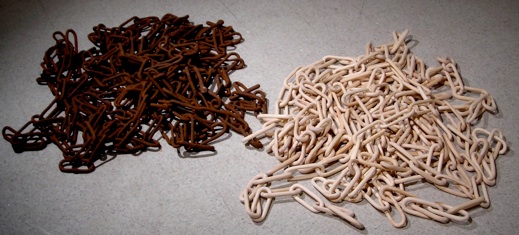wood, cast glass, cast cement, found iron, William Faulkner's As I Lay Dying, 2009.
As a sculptor and installation artist I aim to give poetic form to knowledge. I use materiality as a way of thinking about things that are not necessarily material. This body of work, collectively titled corpus, arises out of recent time spent living in the American Deep South, specifically, Jackson, Mississippi. The images and objects bear witness to the enduring privation, violence and defeat that plagues this part of the country, independently and as a result of the epic social and natural disaster experienced in the wake of Hurricane Katrina.
Reparations, a large linked chain, one half rusted iron and one half unfinished pine, lays in two menacing heaps upon the gallery floor. The aged and weathered metal sits in uneasy contrast to the light and raw wooden links. In A Brief History of the South, heaps of cast concrete books--piled carelessly and in ruin--probe the privilege and inaccessibility of knowledge. In Exodus (Fountain for NOLA), a dresser, much like the kind seen floating amid the debris of Katrina, is reconfigured as an absurd, inverse fountain. Water seeps slowly from the top drawer into a half-open drawer beneath. The dresser weeps. Accompanied by a sound score reciting text from the book of Exodus, the drawer steadily fills with water, unfolding a Biblically scaled narrative of loss. A common dresser stands as a symbol of mourning for the many objects and lives catastrophically wiped away.
These works enact a poetic relationship between the found and the handmade object. The frames, books, chain, dresser, crutch and gun are all objects I encountered and detoured away from ordinary, utilitarian purposes. I put them into dialogue with various materials in order to complicate their positions and significations, and with the hope of inspiring new forms and imaginings. My deepest conviction as a sculptor asserts that the way an object is made is indubitably tied to its meaning. As a result, many of these works are a product of laborious, repetitive, even nurturing acts, so that meaning becomes condensed within the objects, rather than applied to them. It is my desire to implicate the viewer in a phenomenological situation, in which the experience of objects is ambiguous, corporal and direct. It is this thinking--in the language of materials and process--that allows me to speak most lucidly about the blunt vulnerability, and yet frightening elegance, of being alive.
